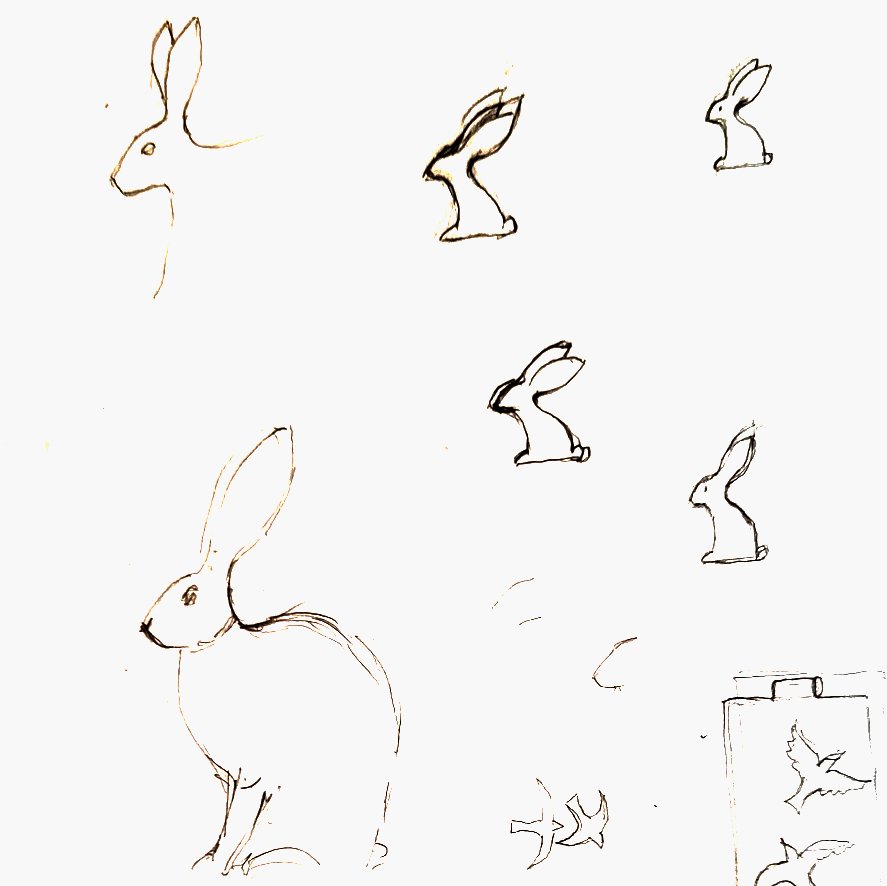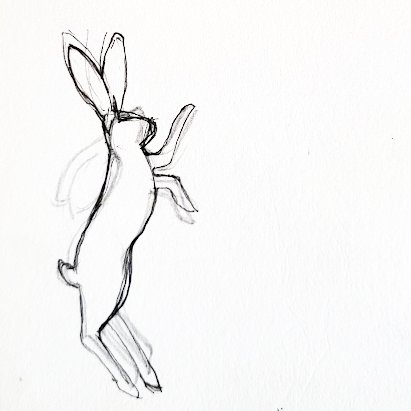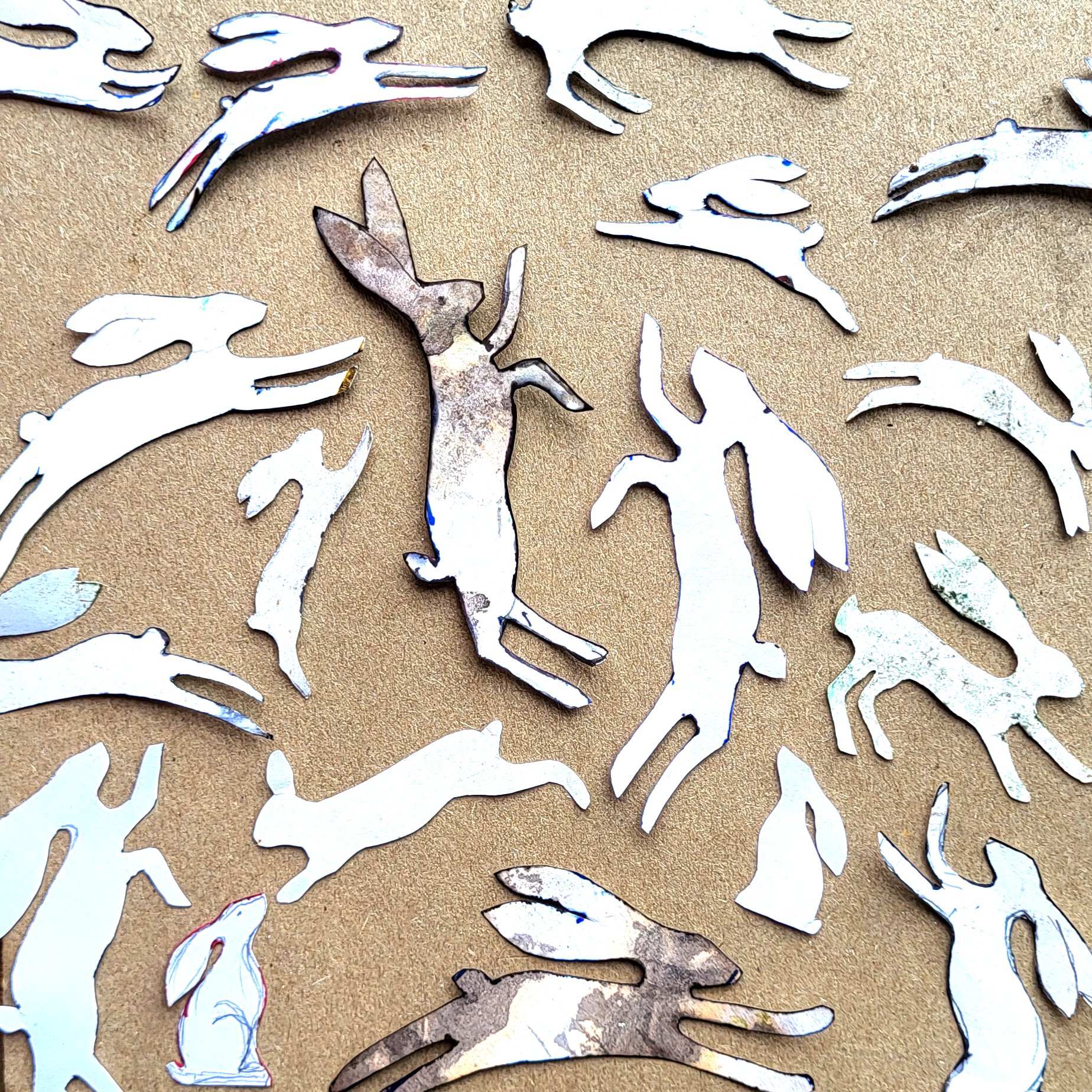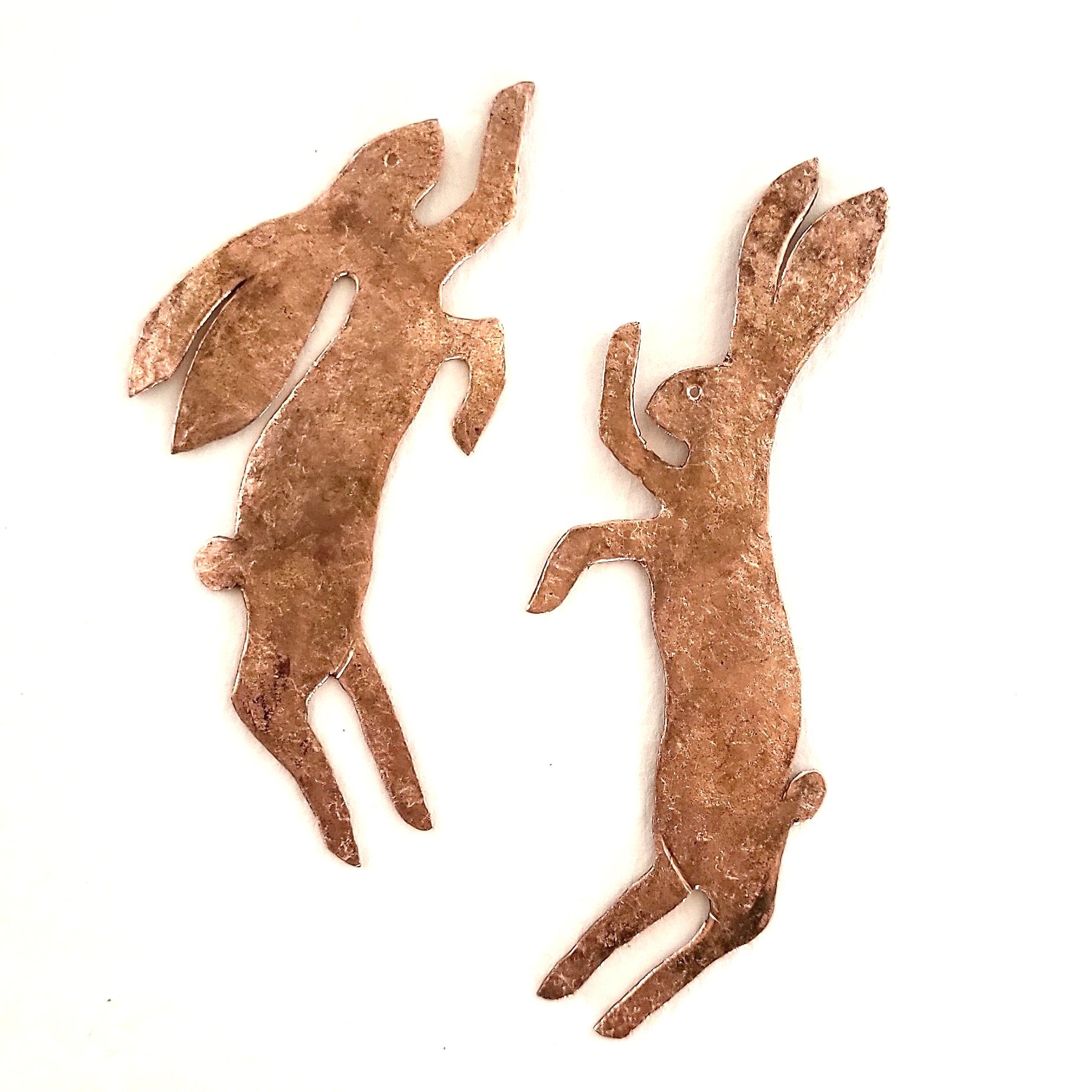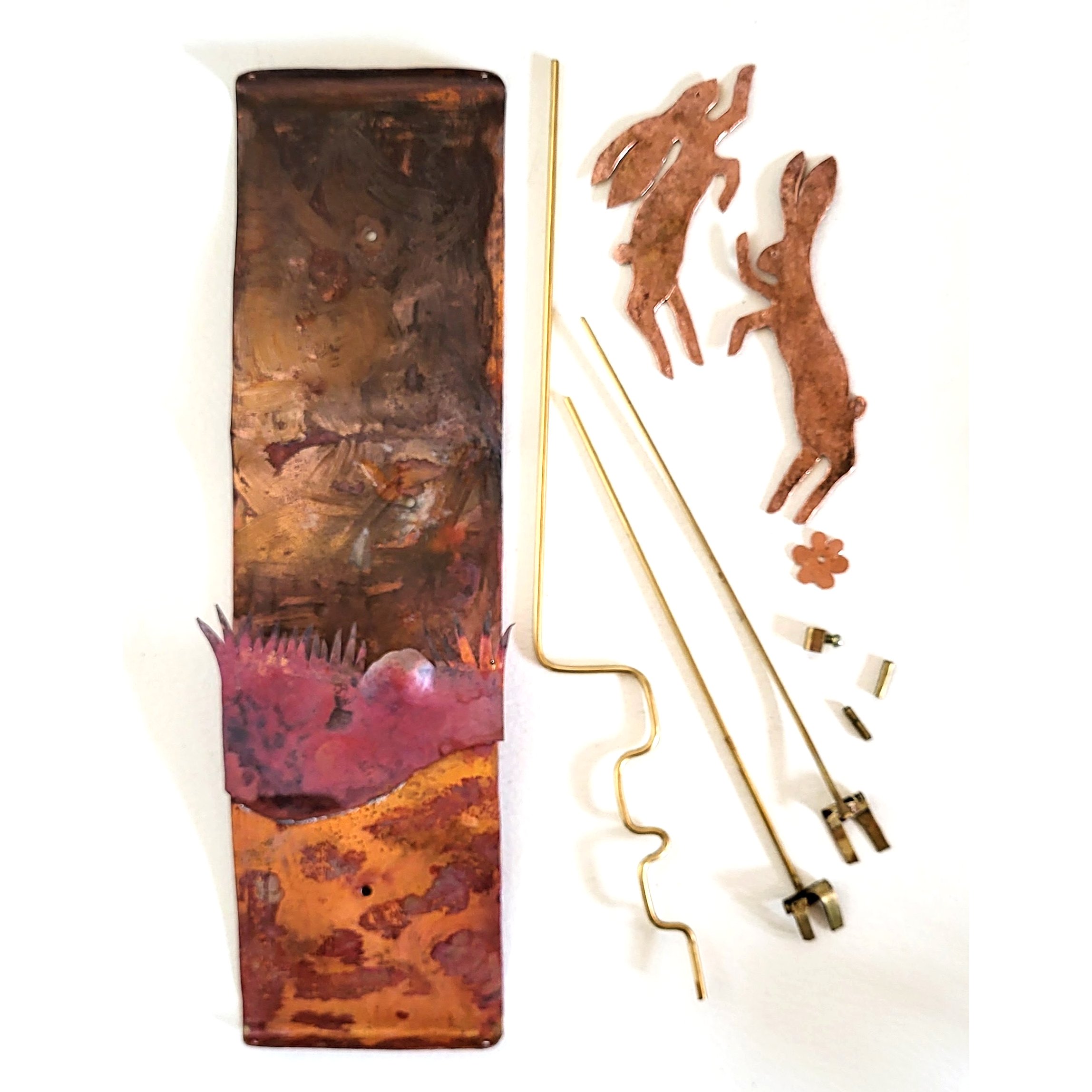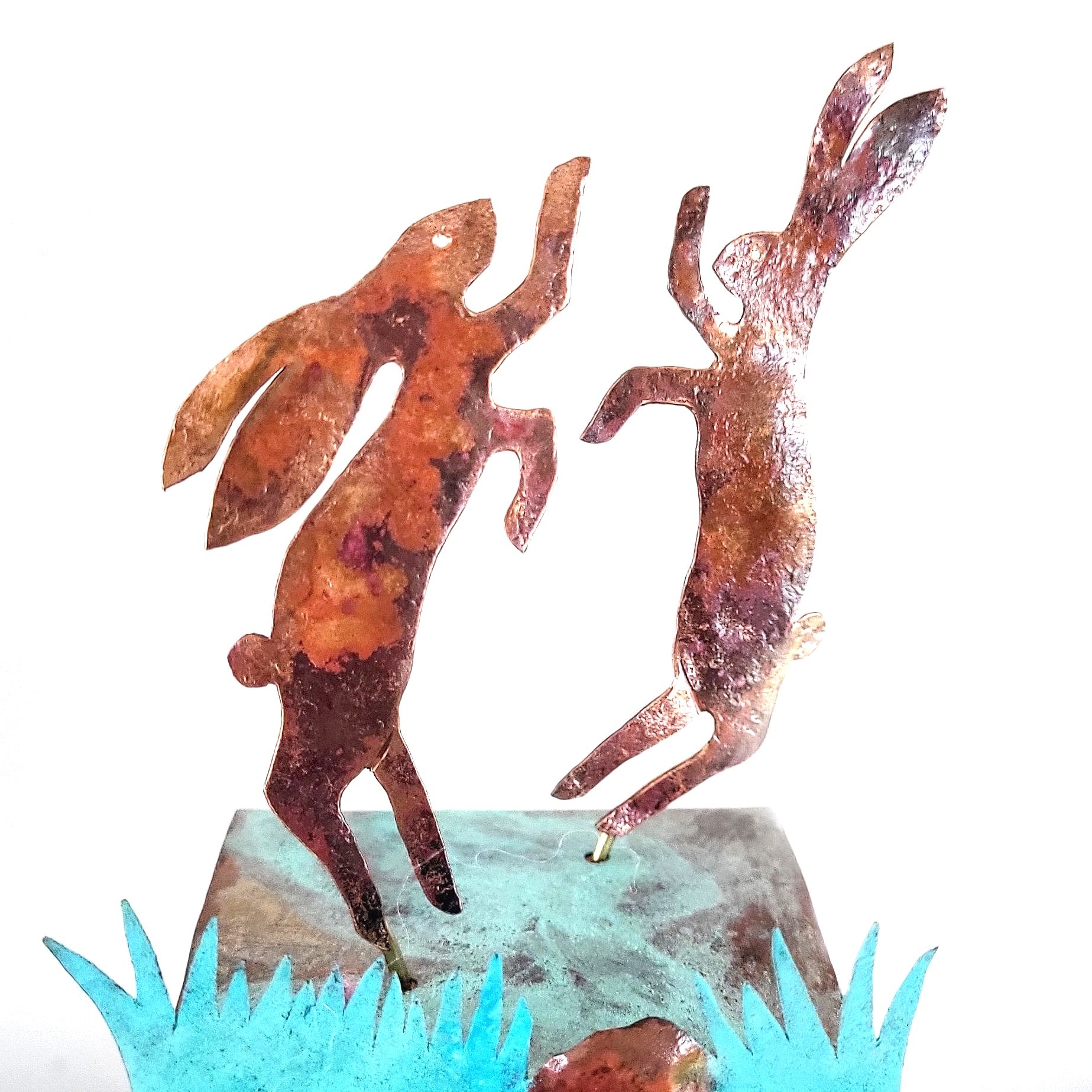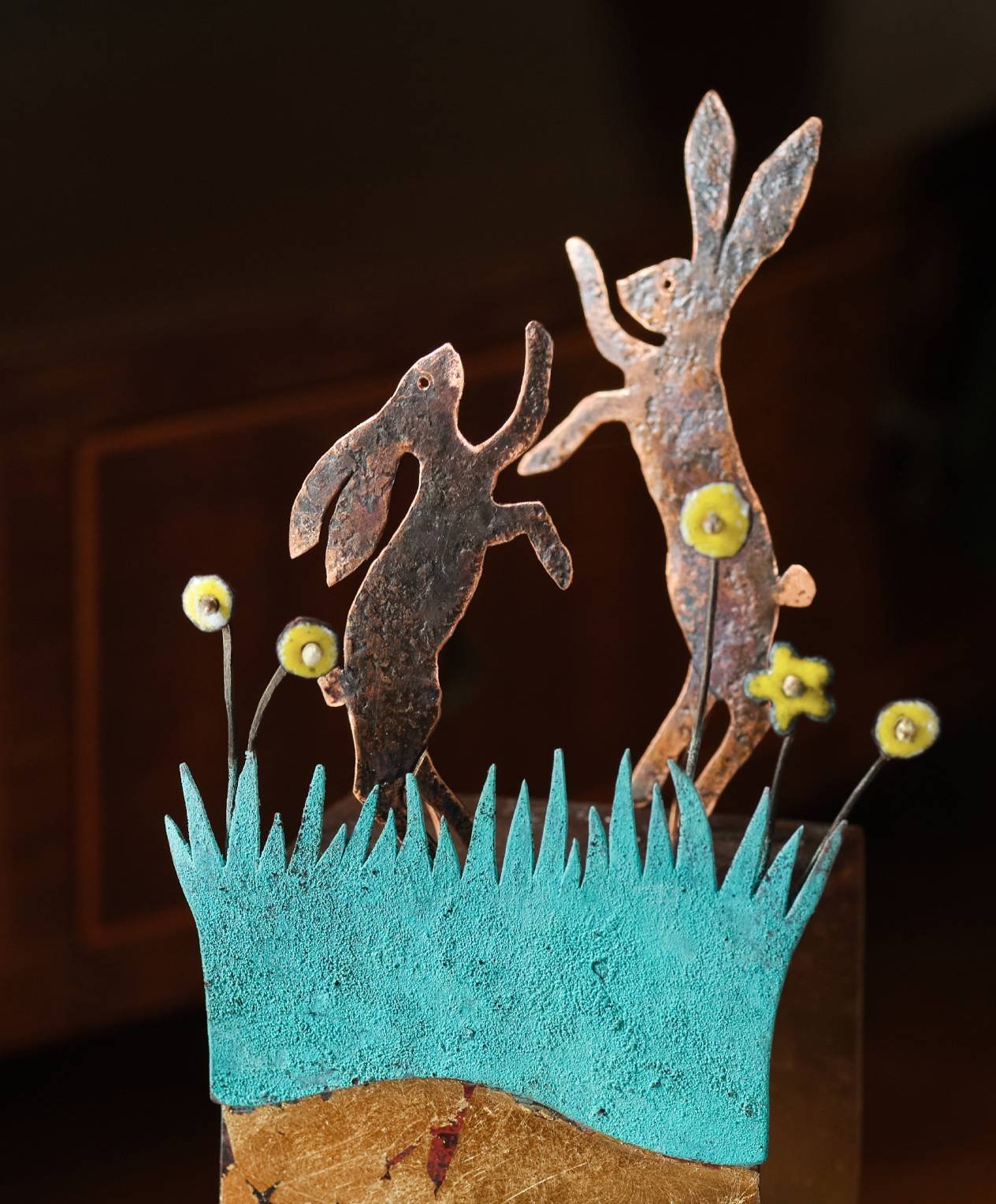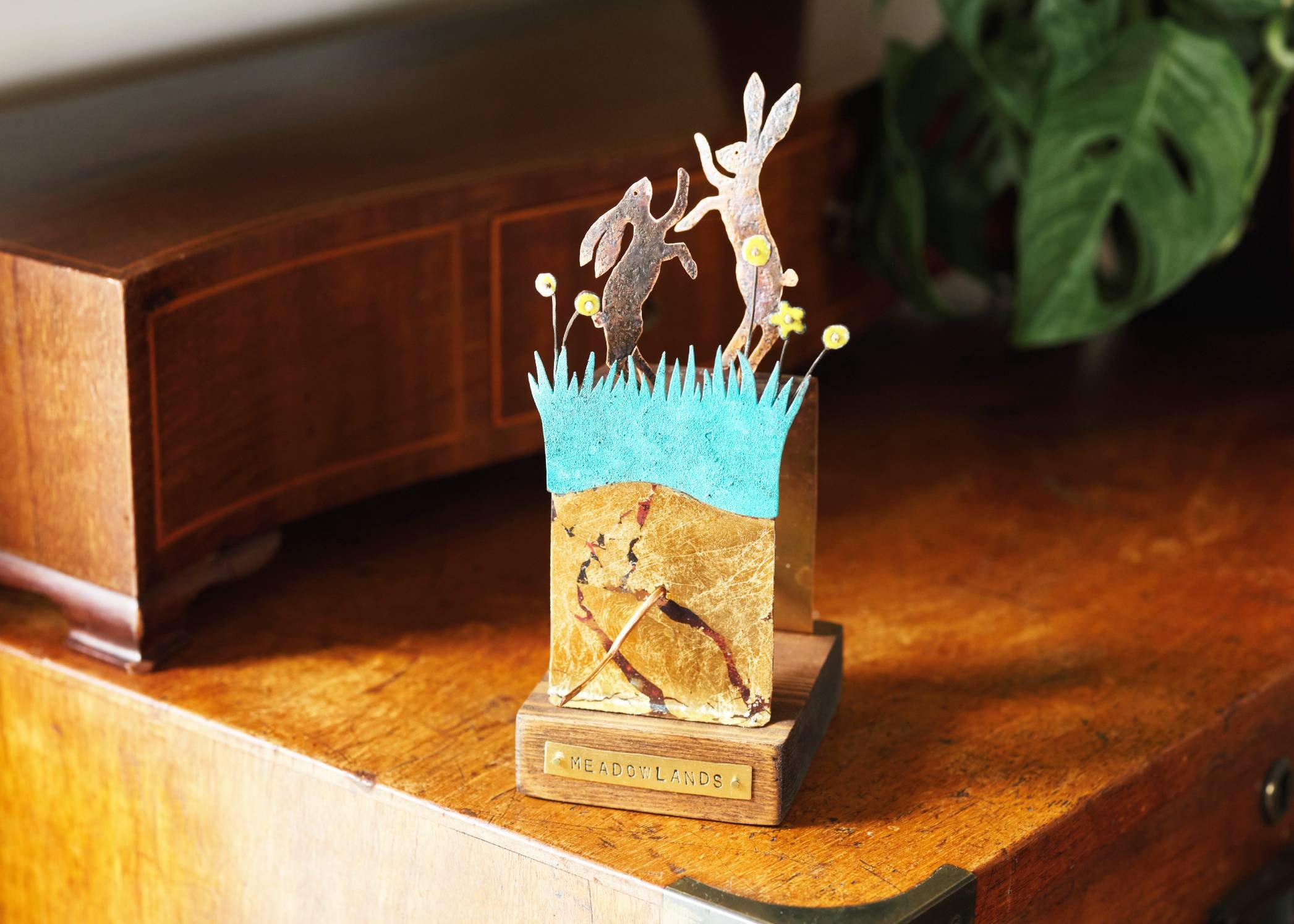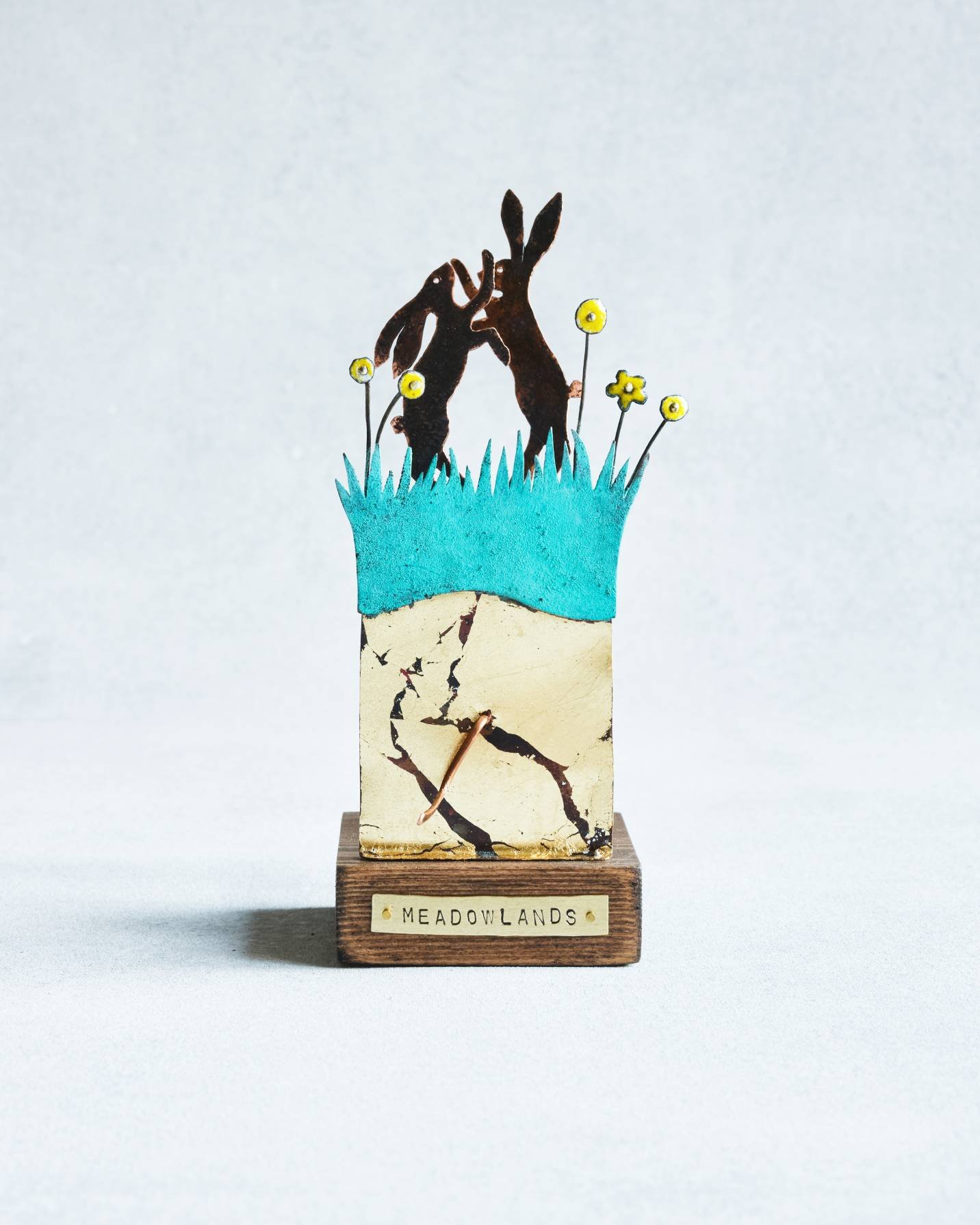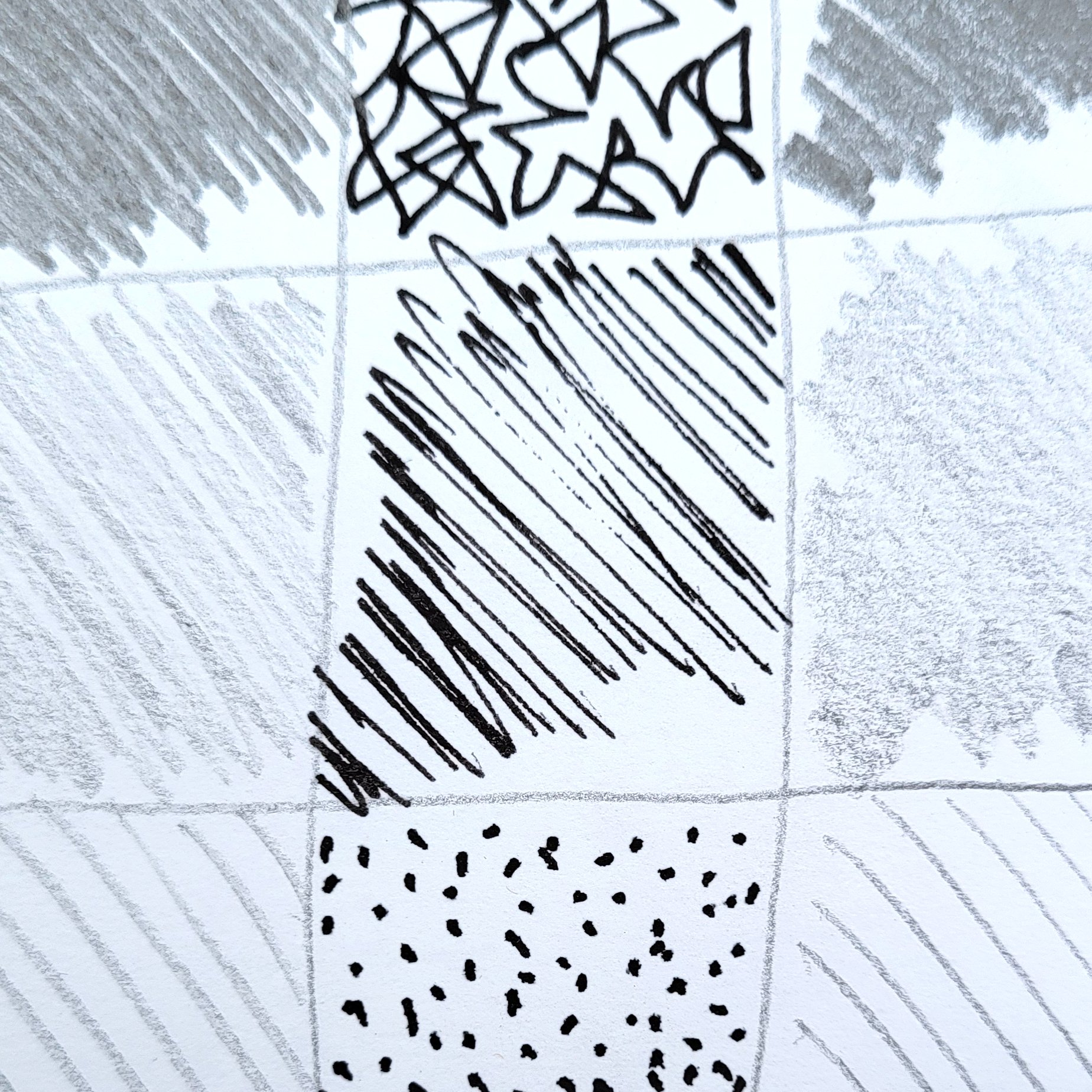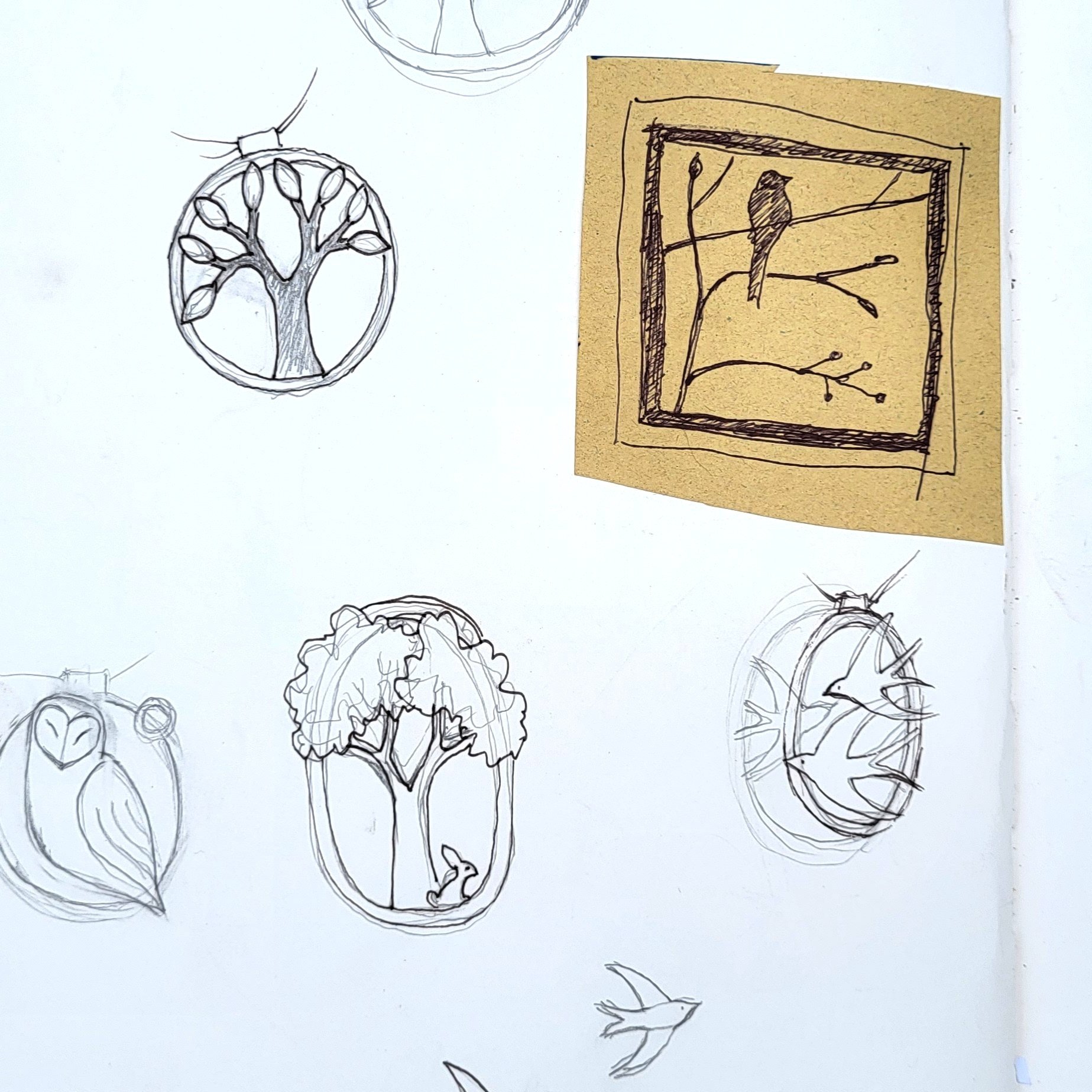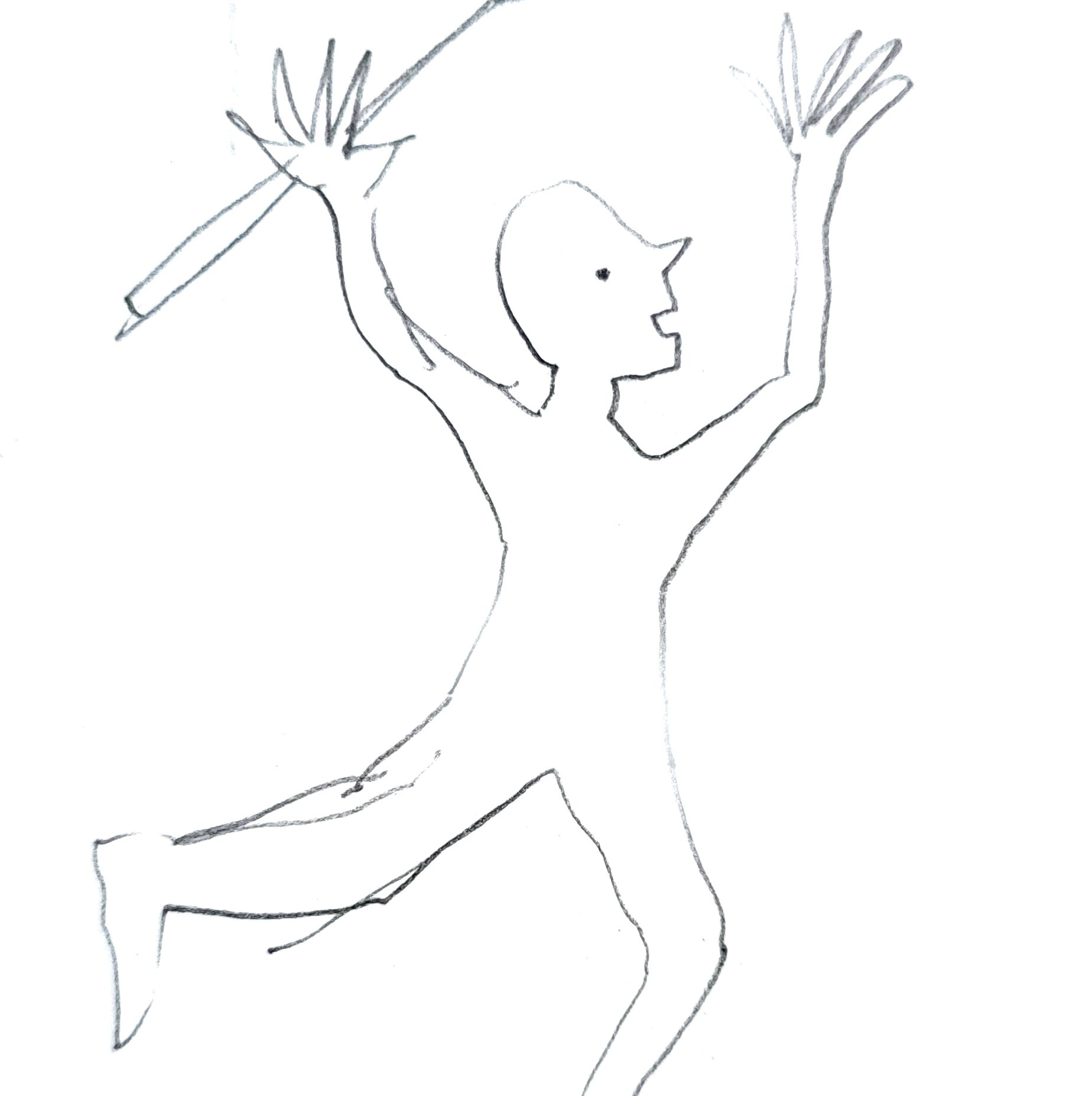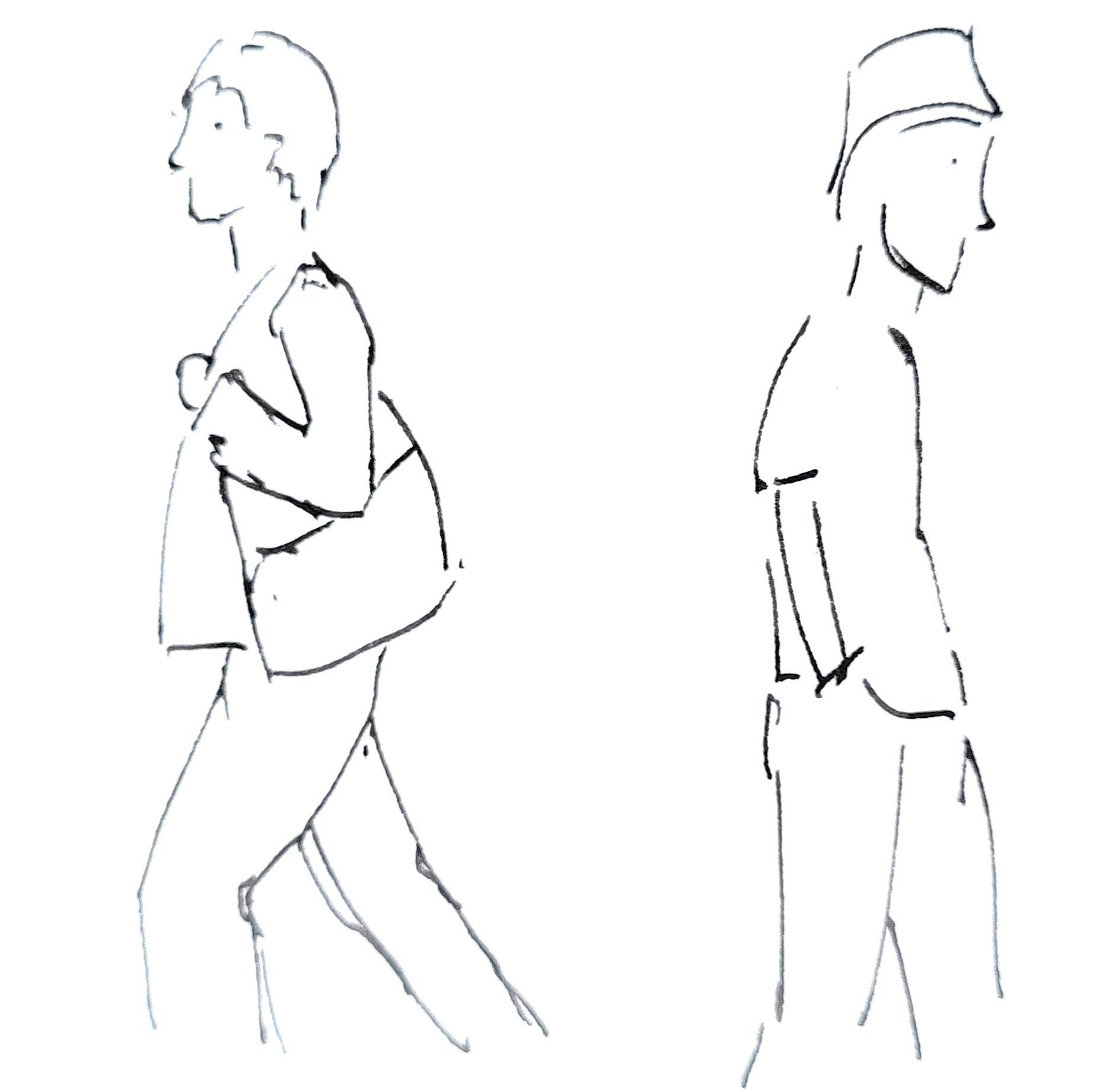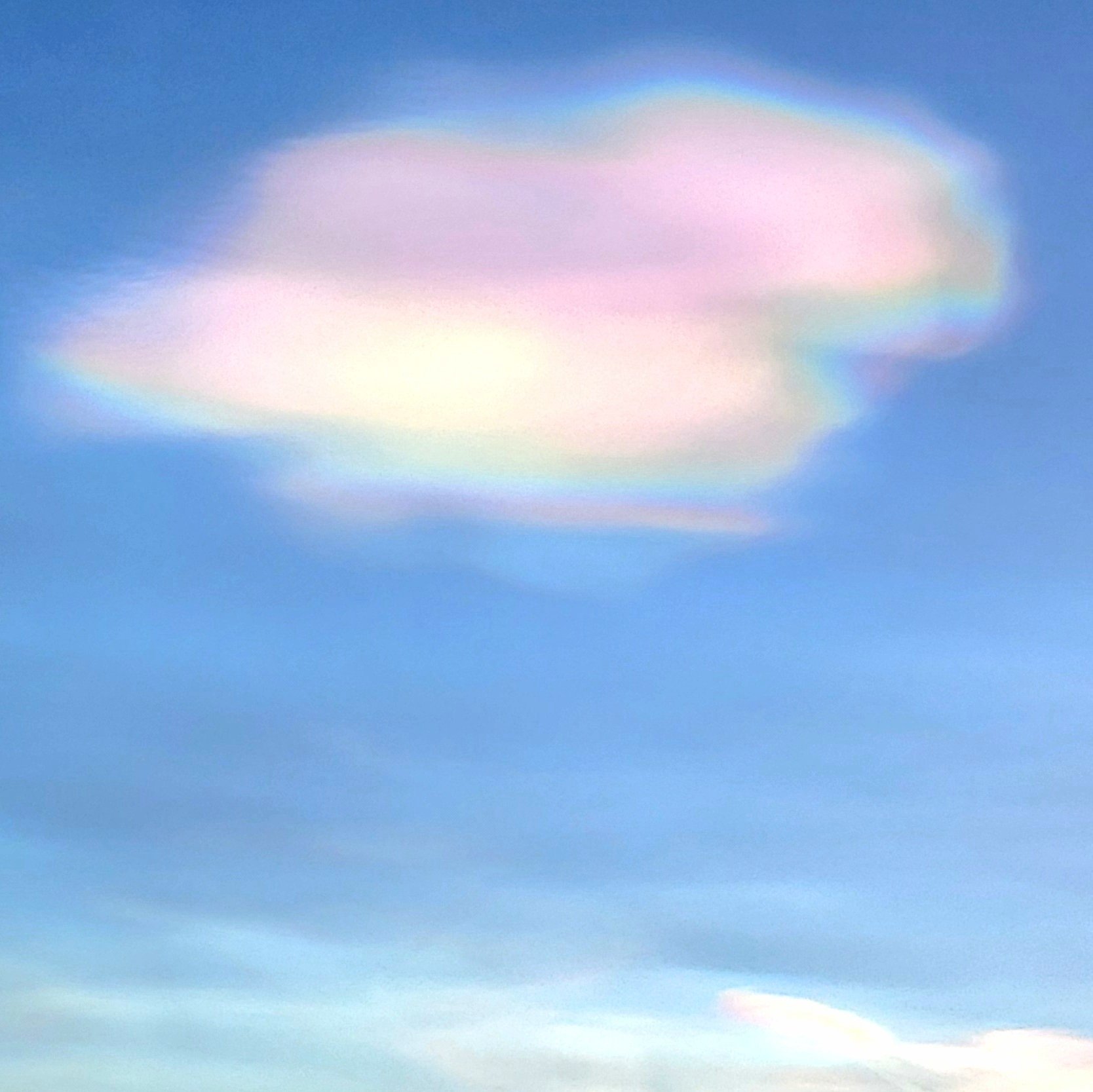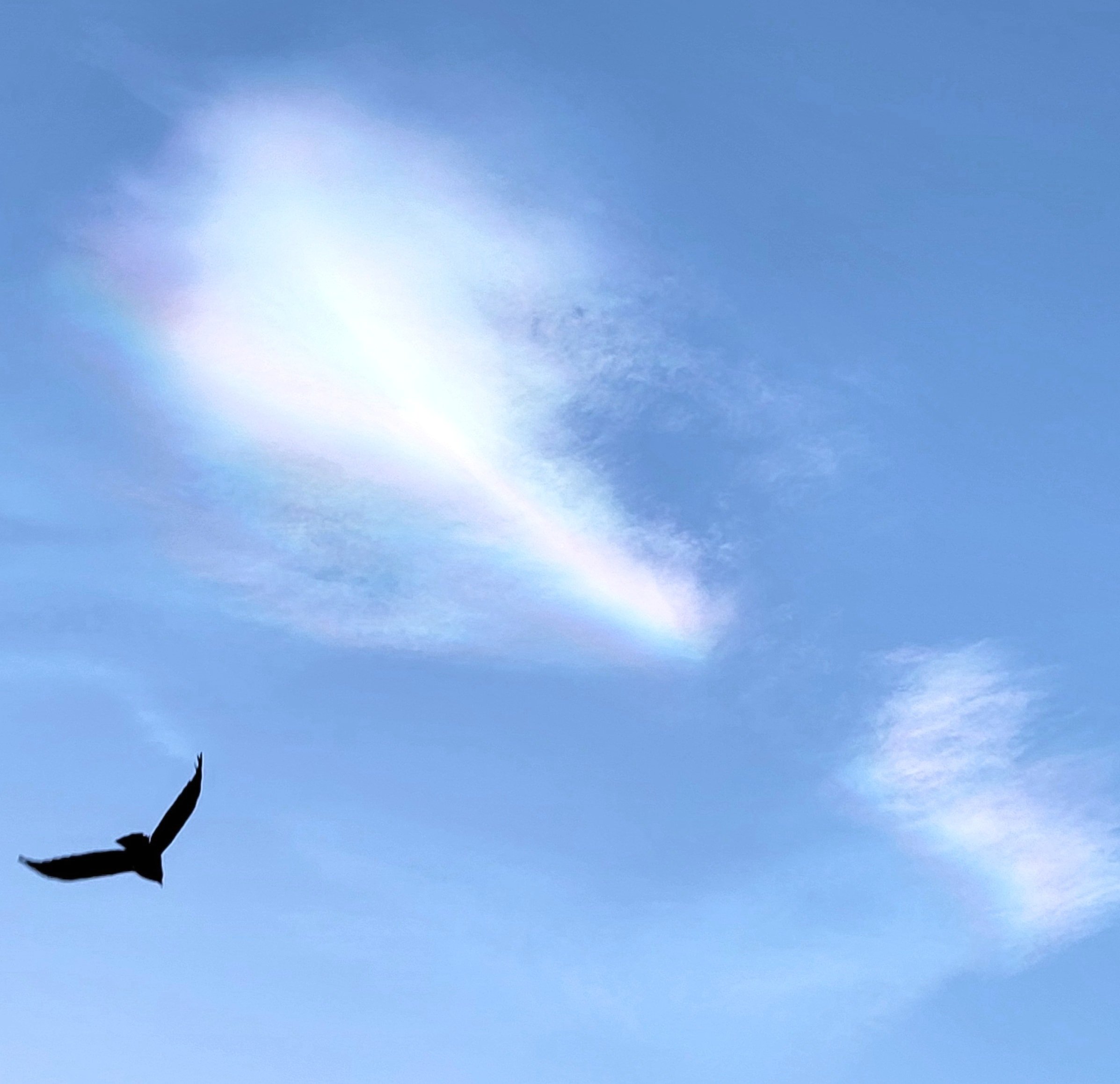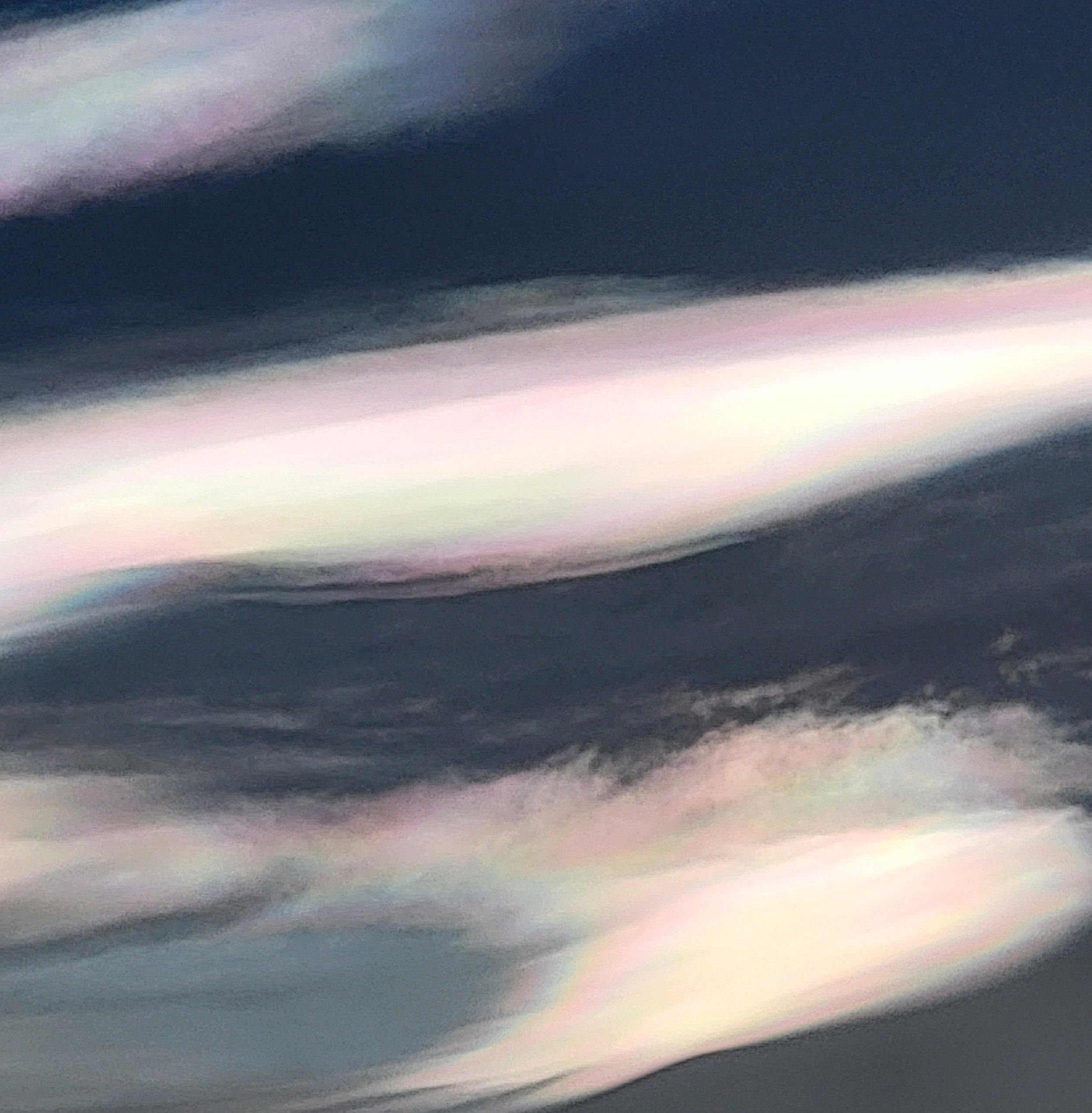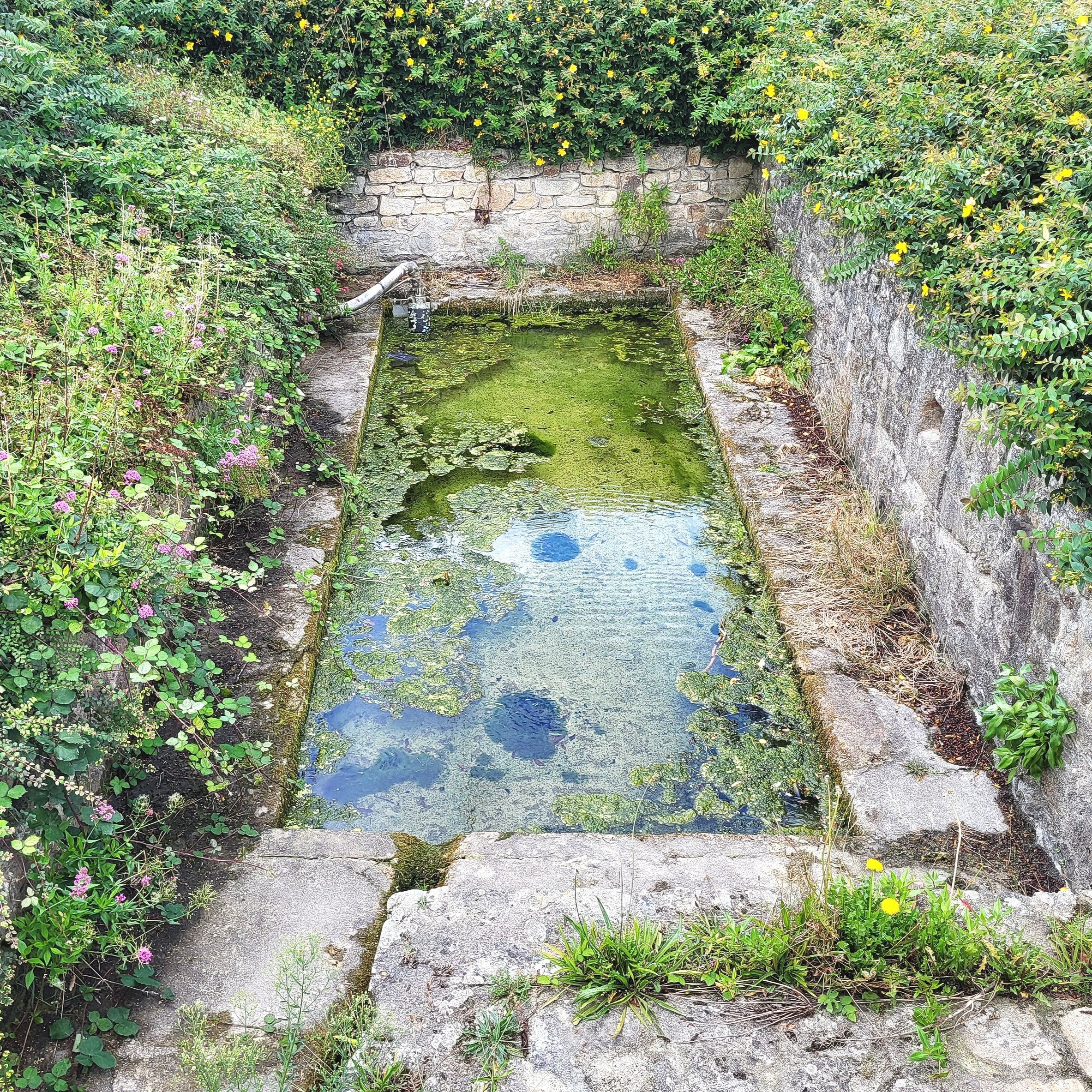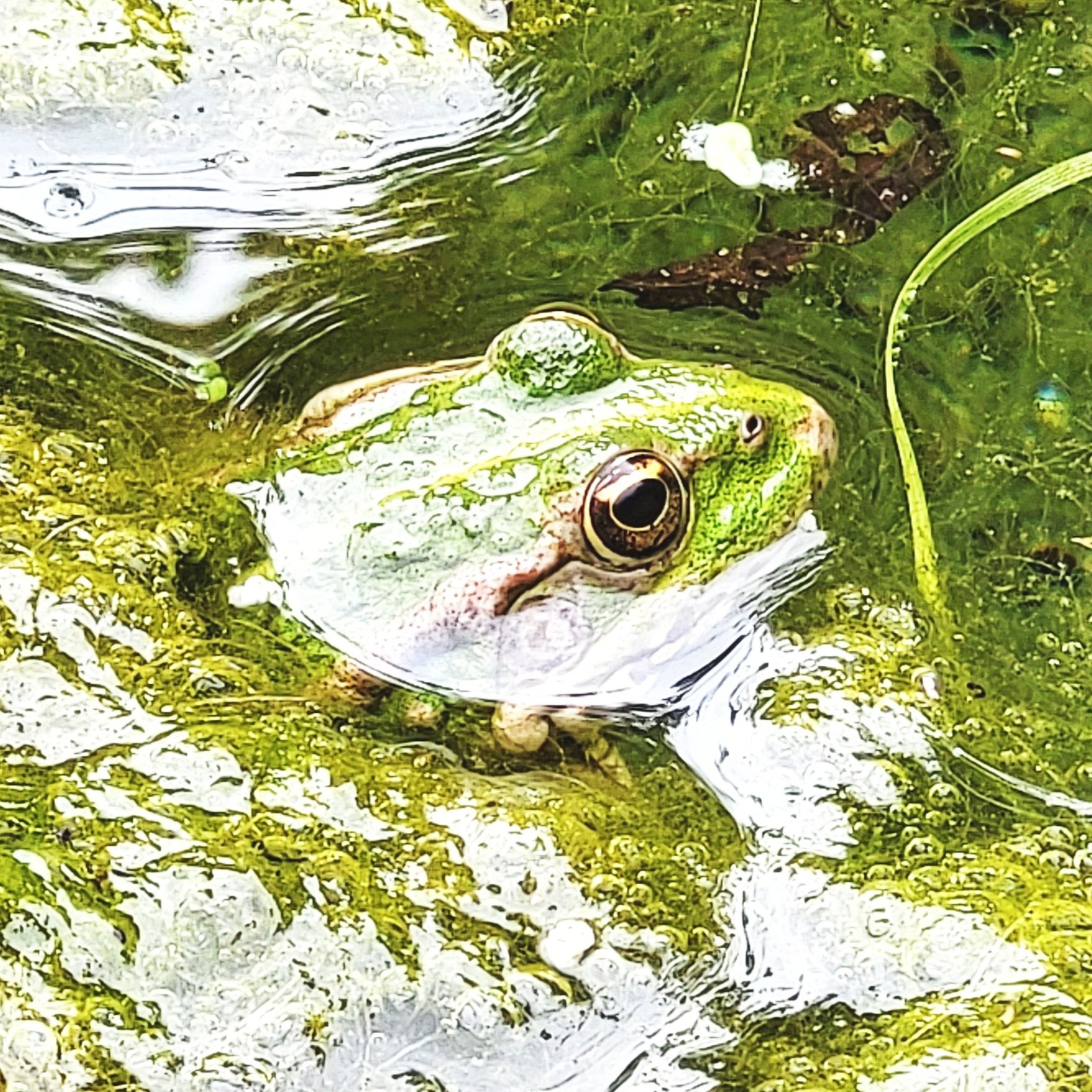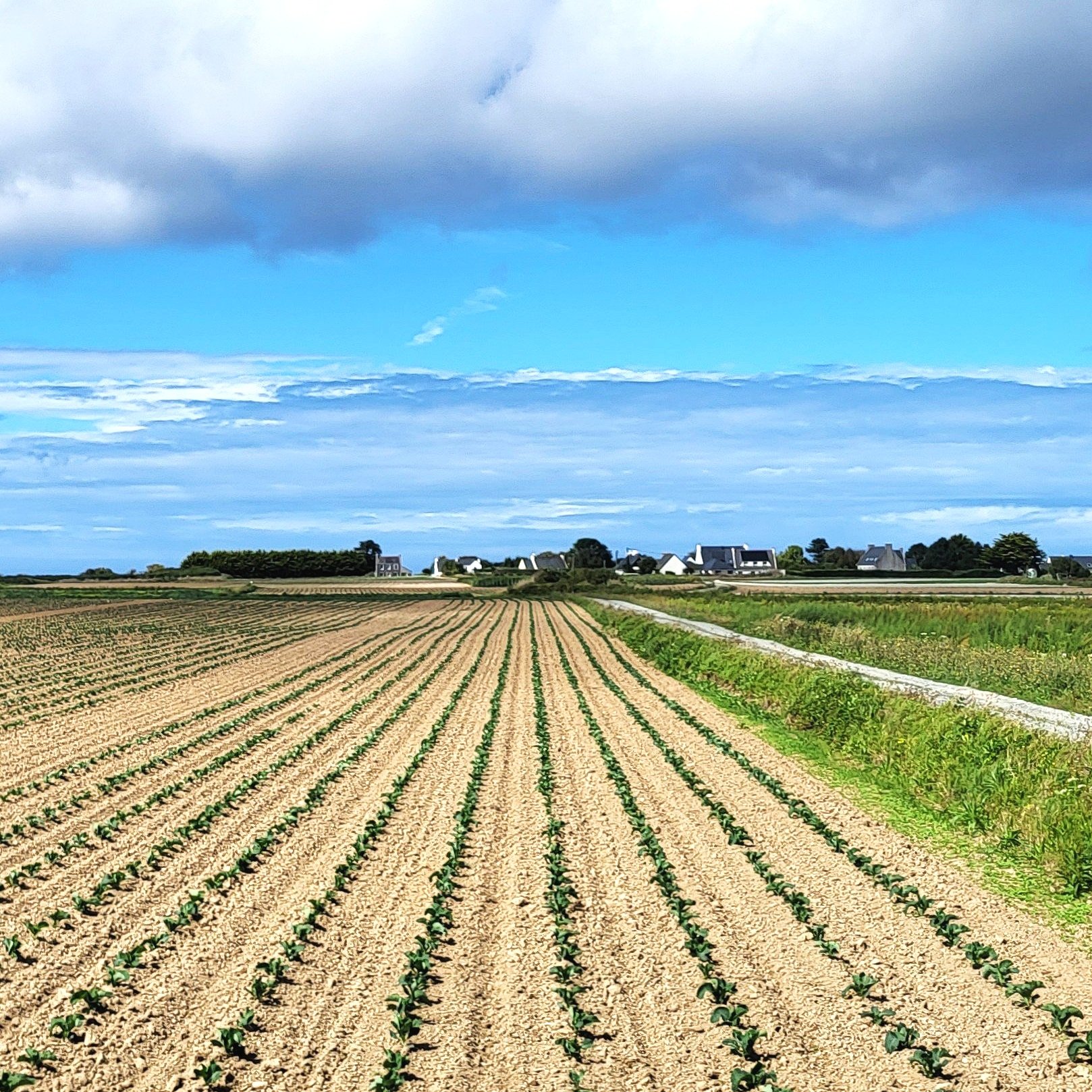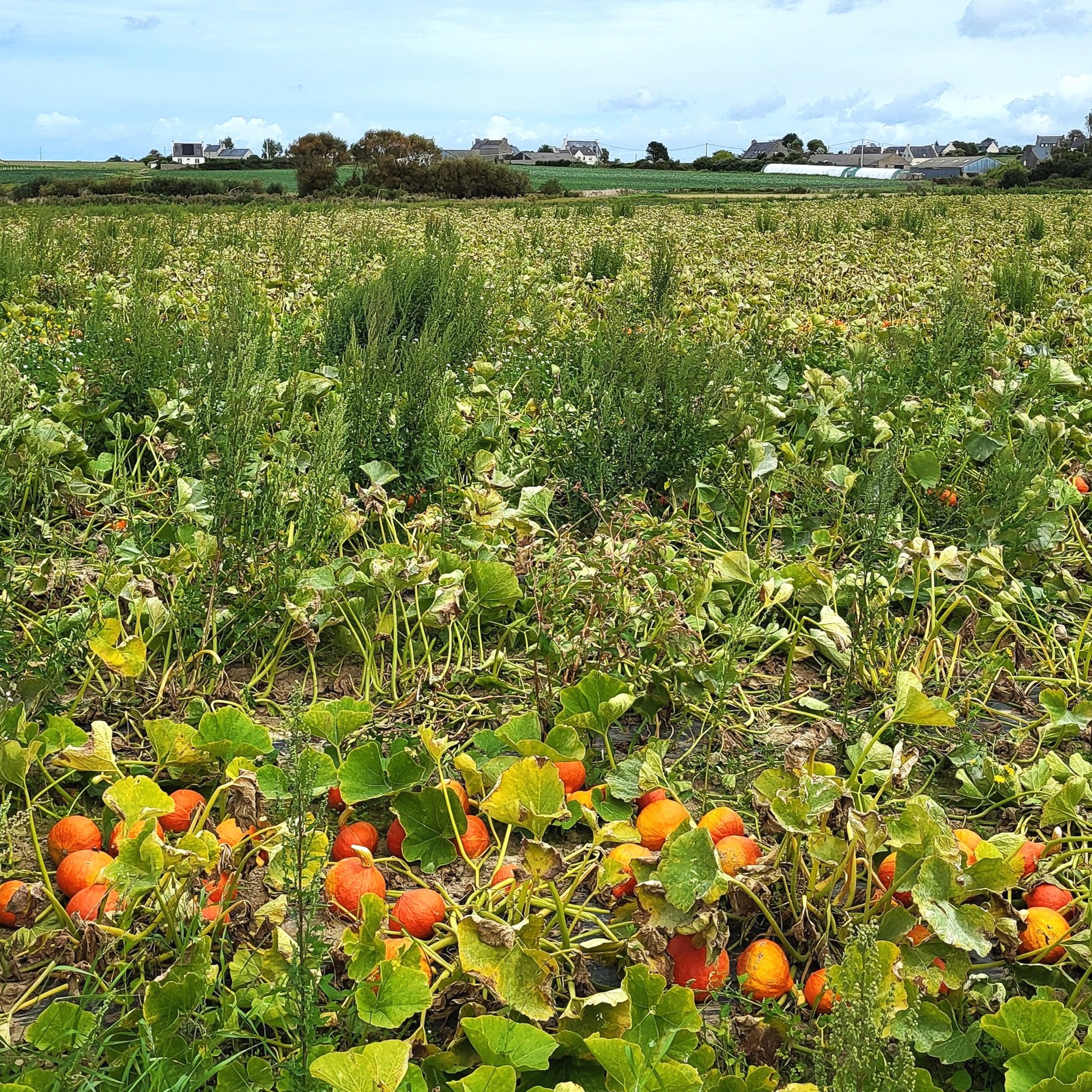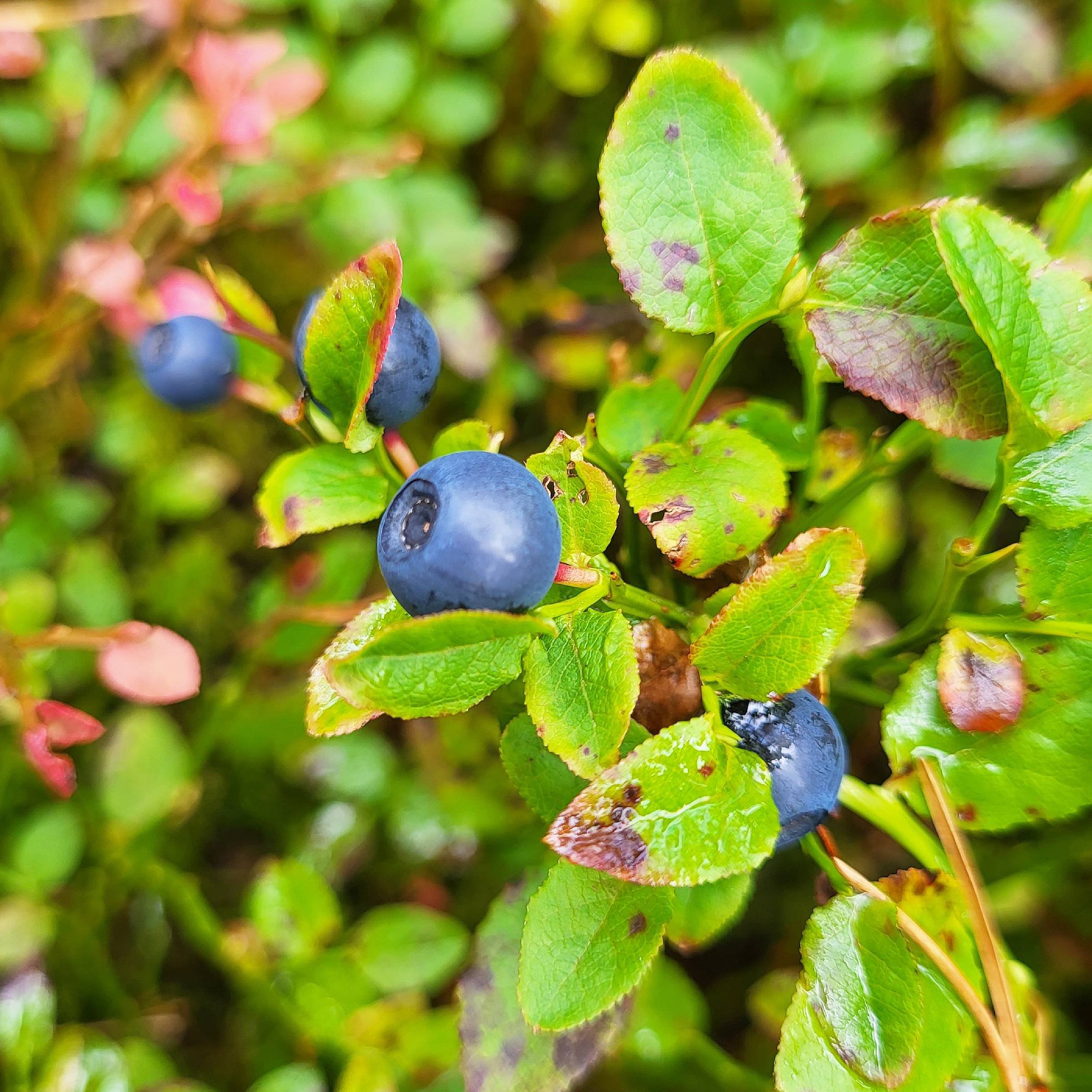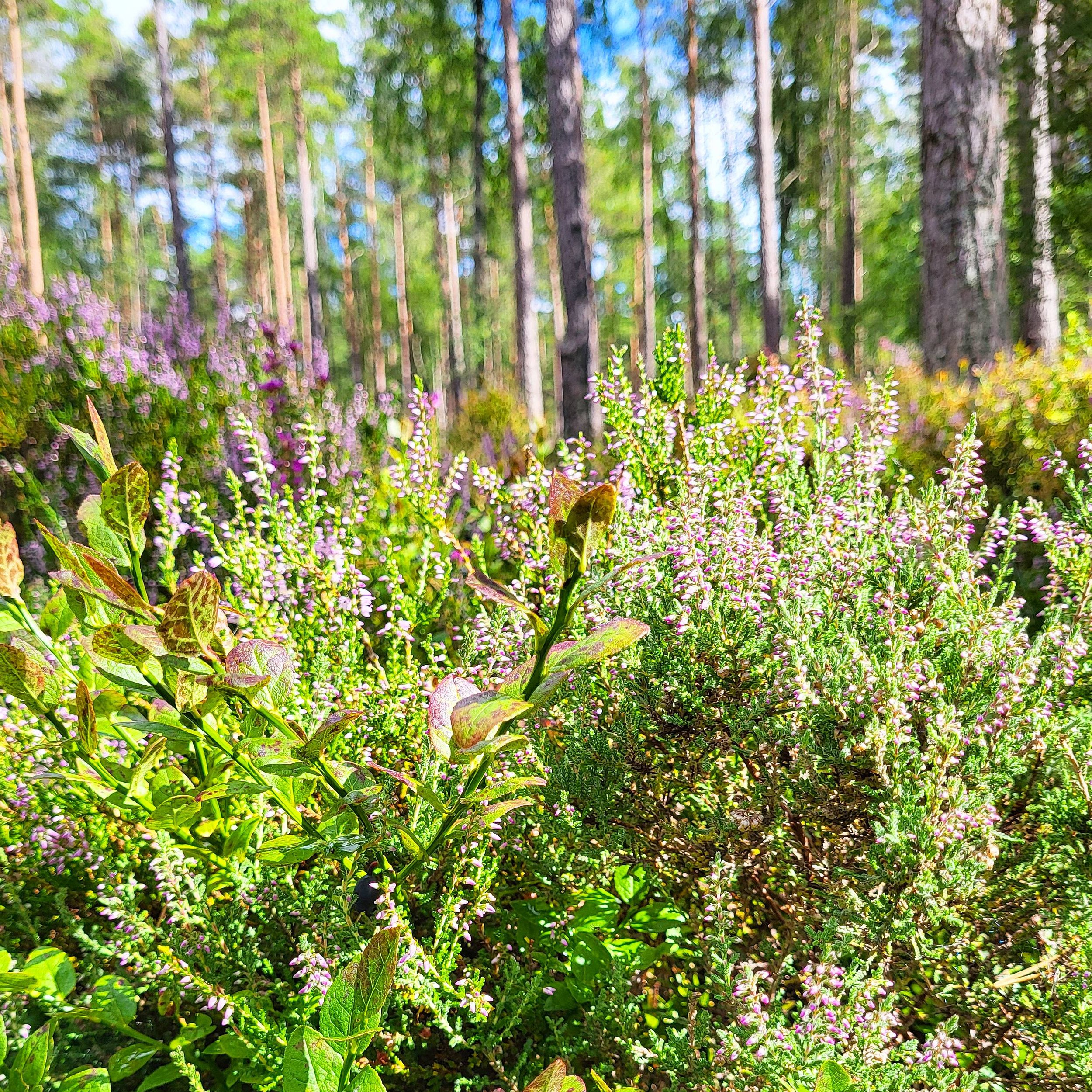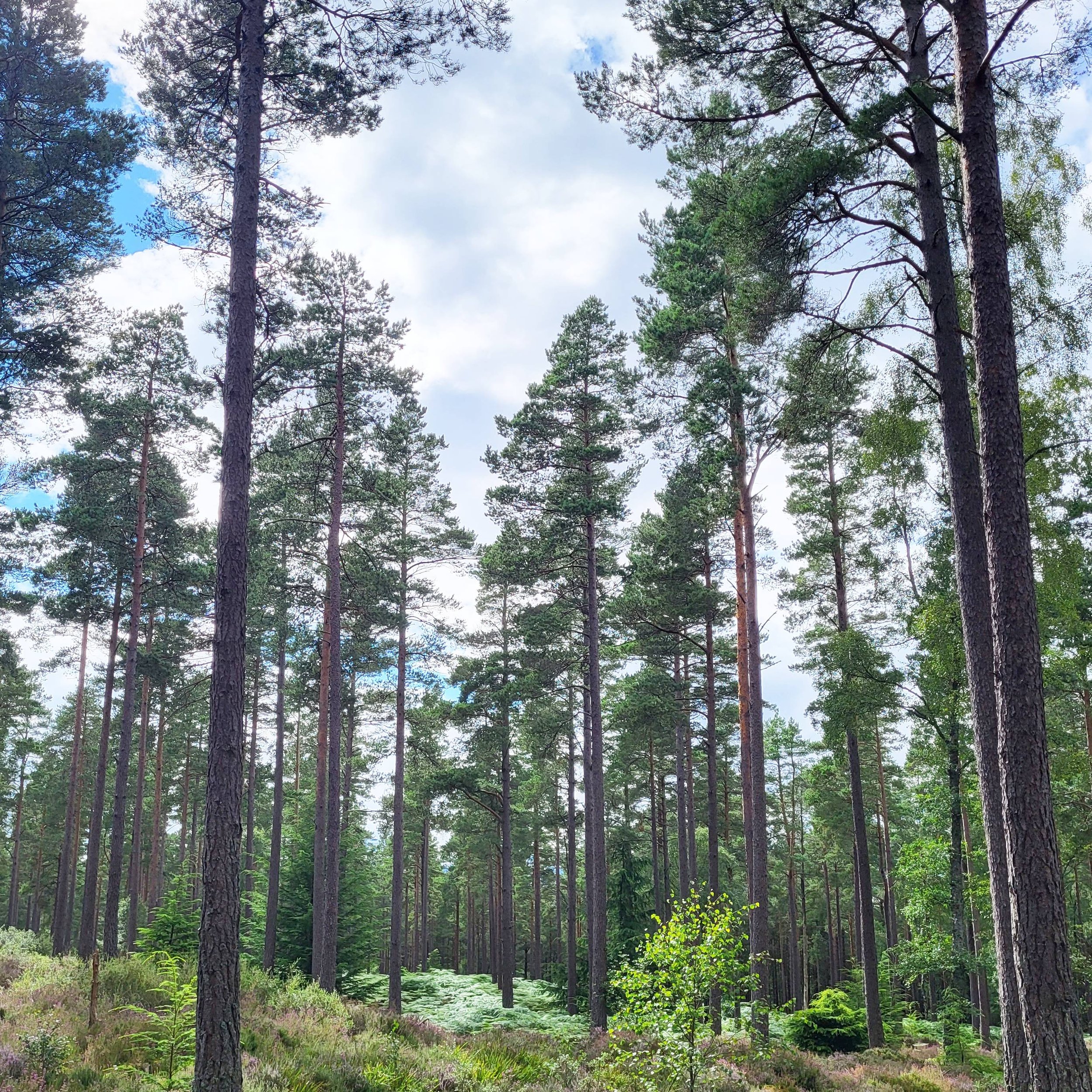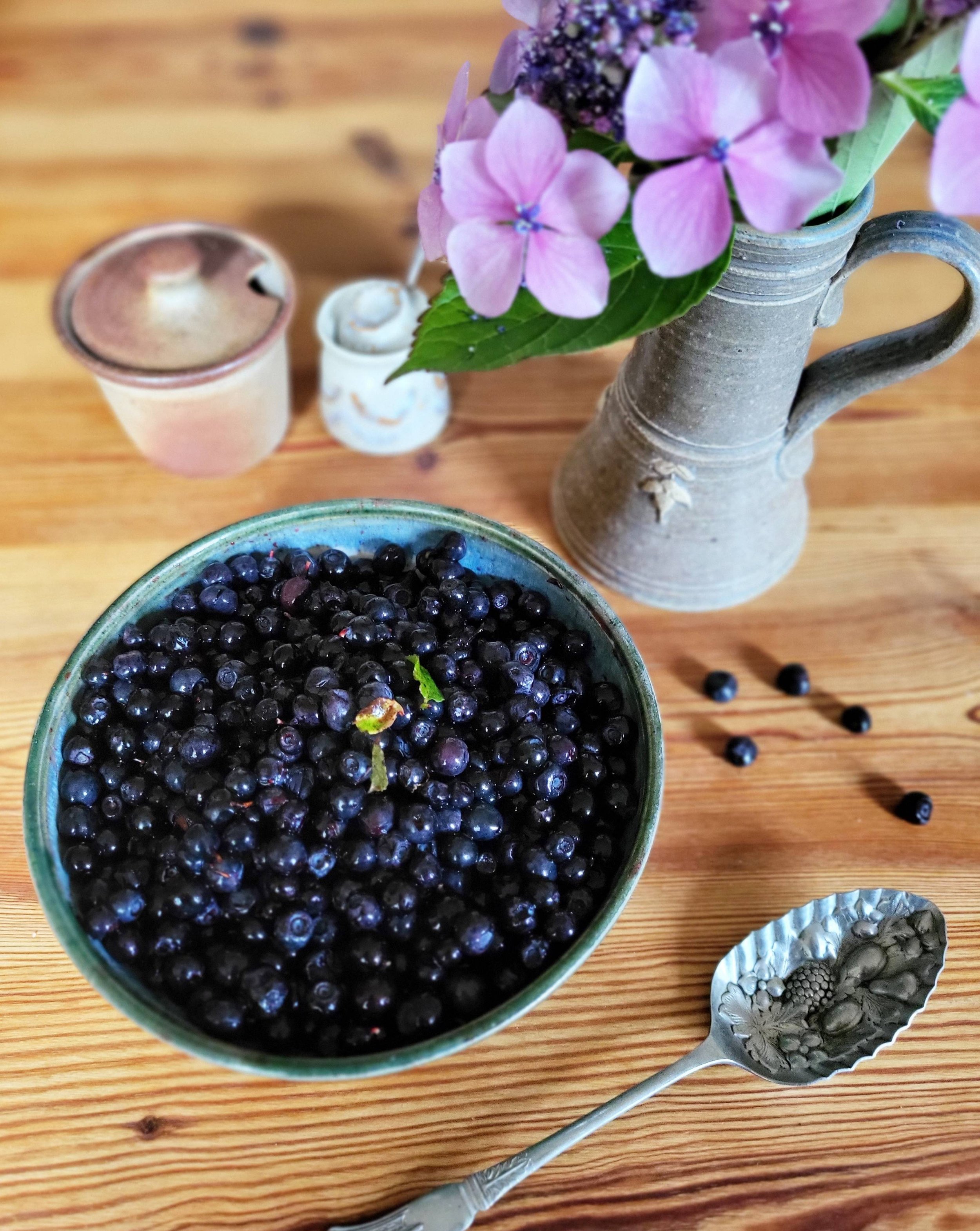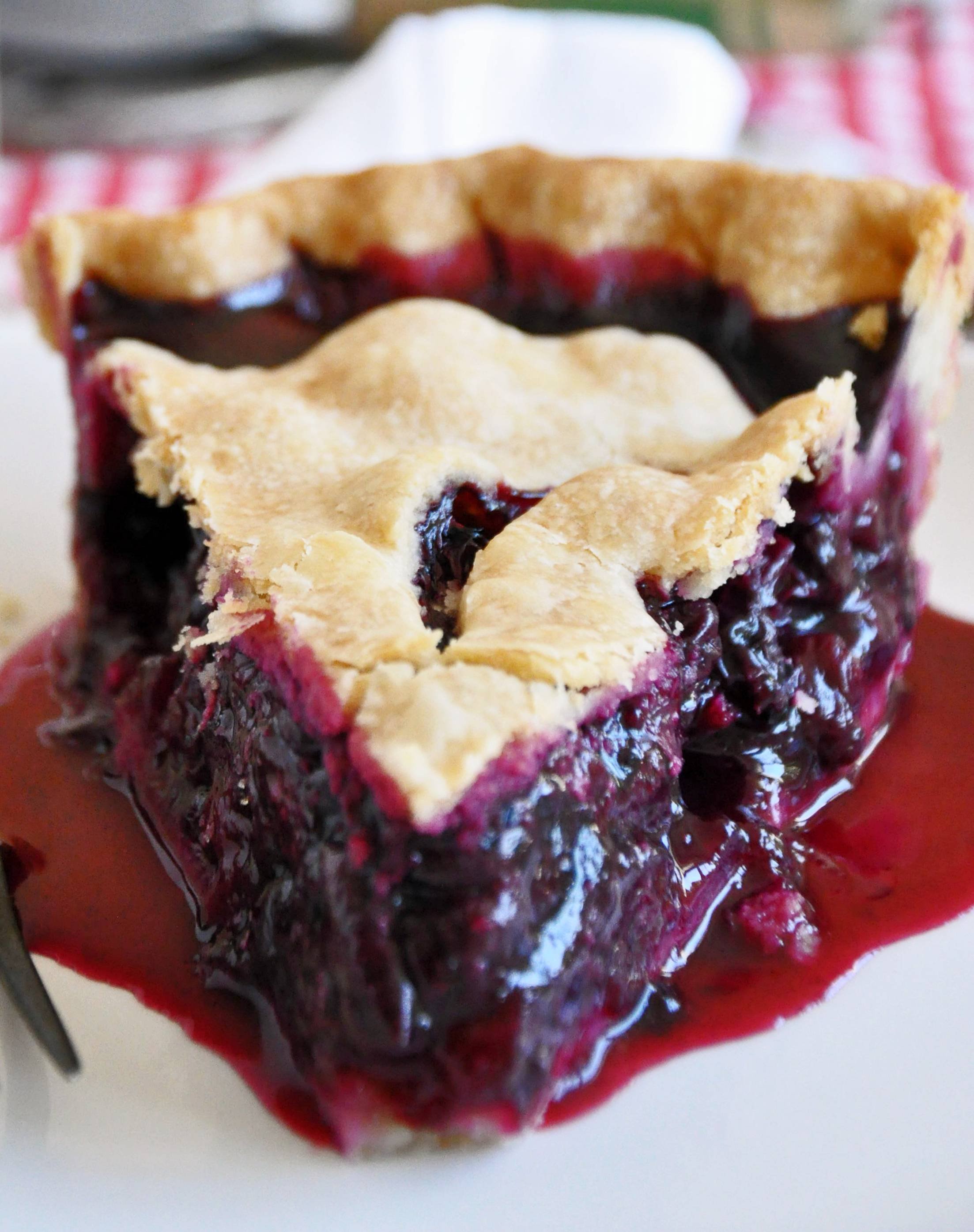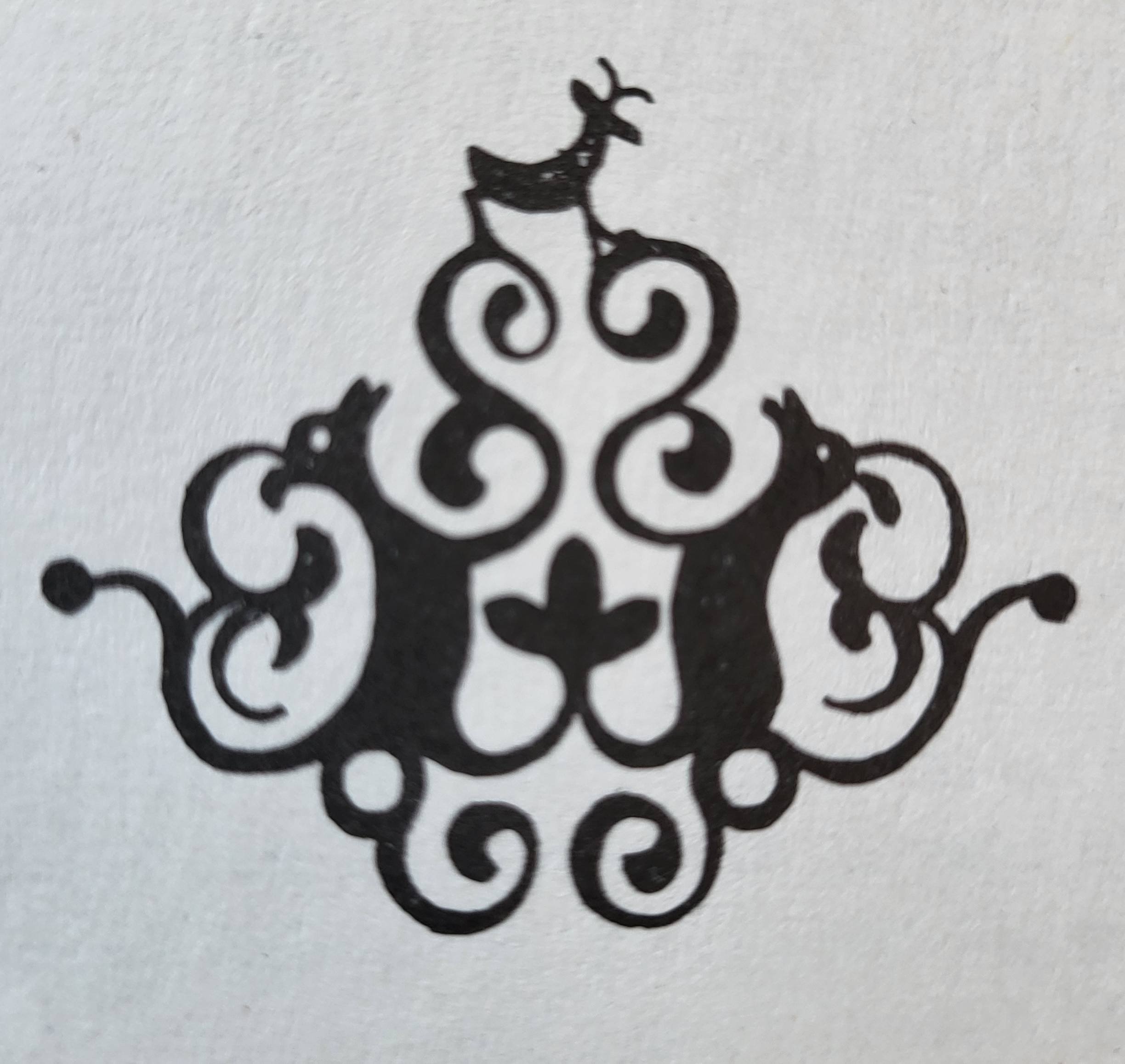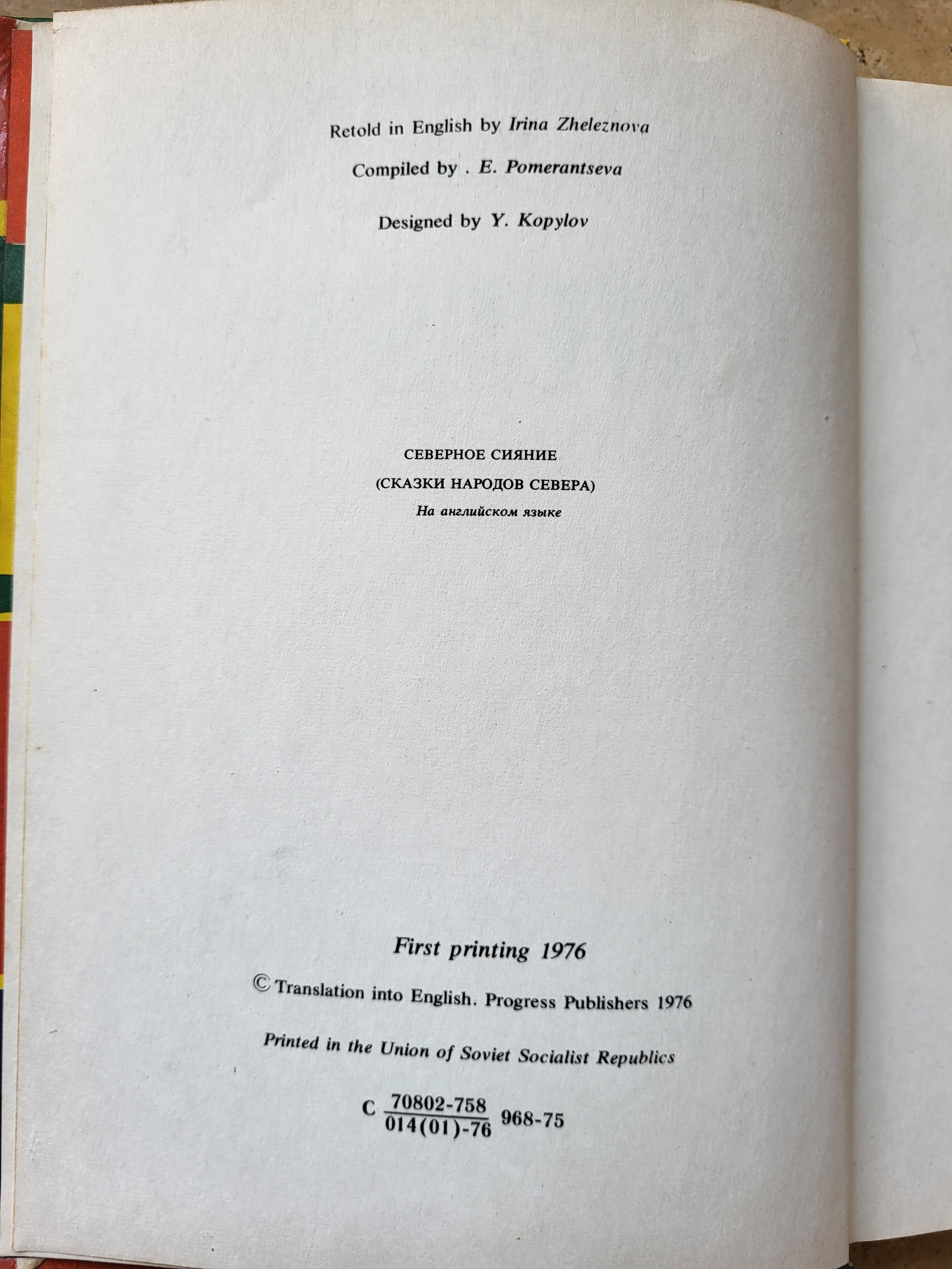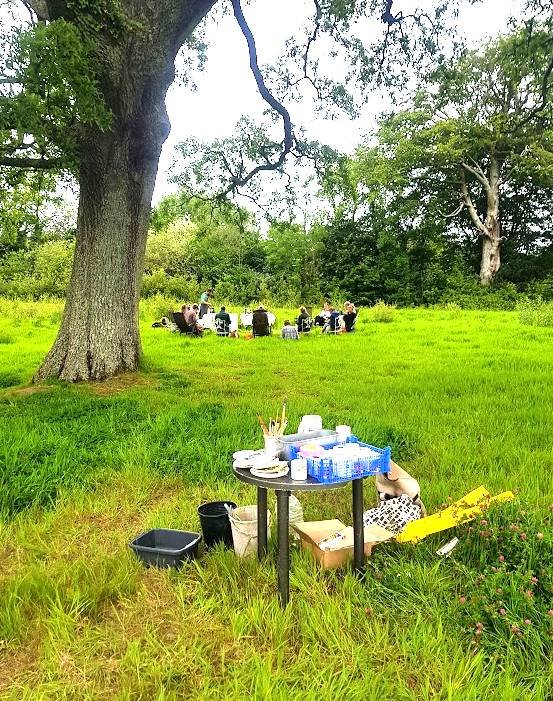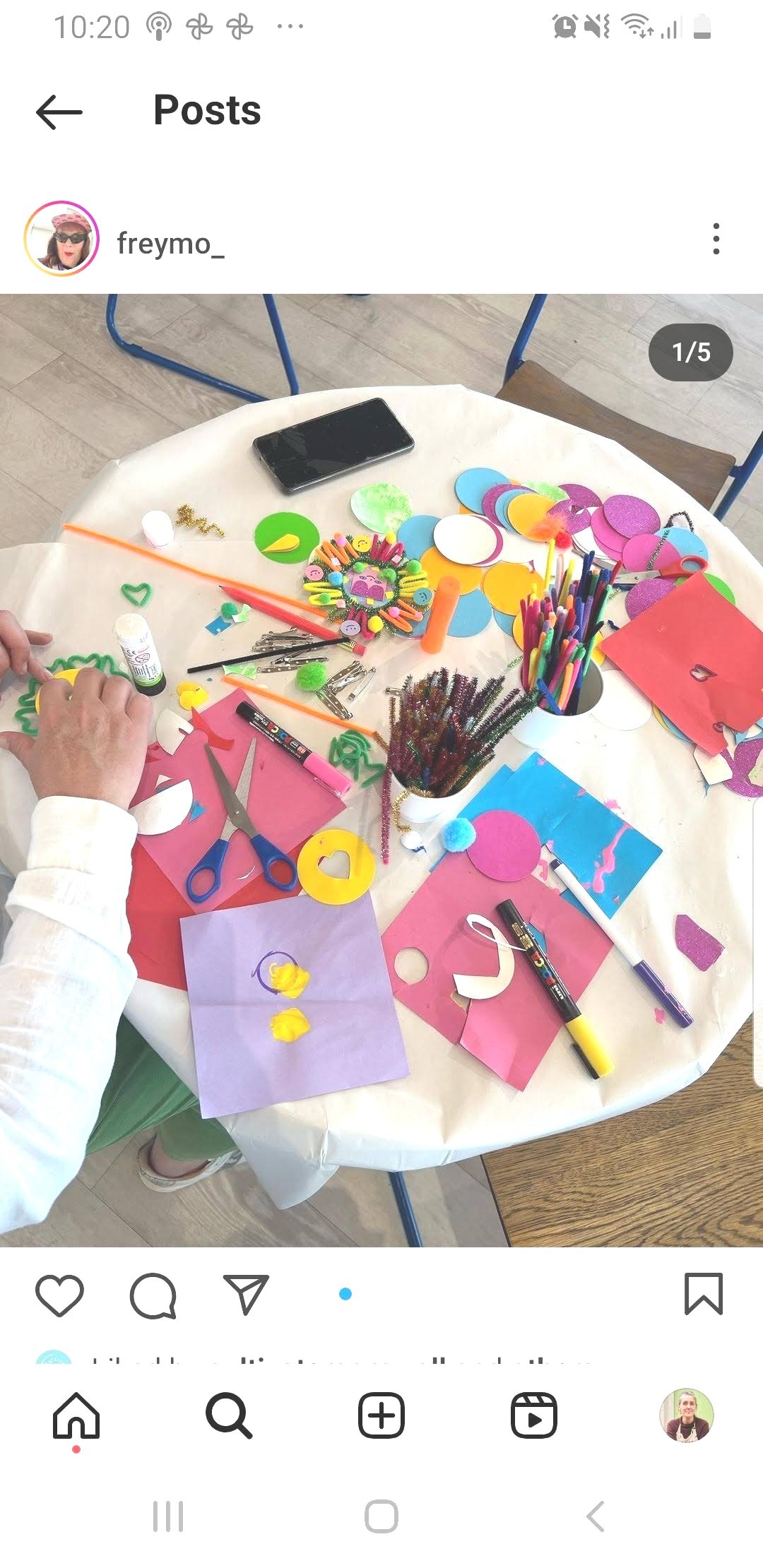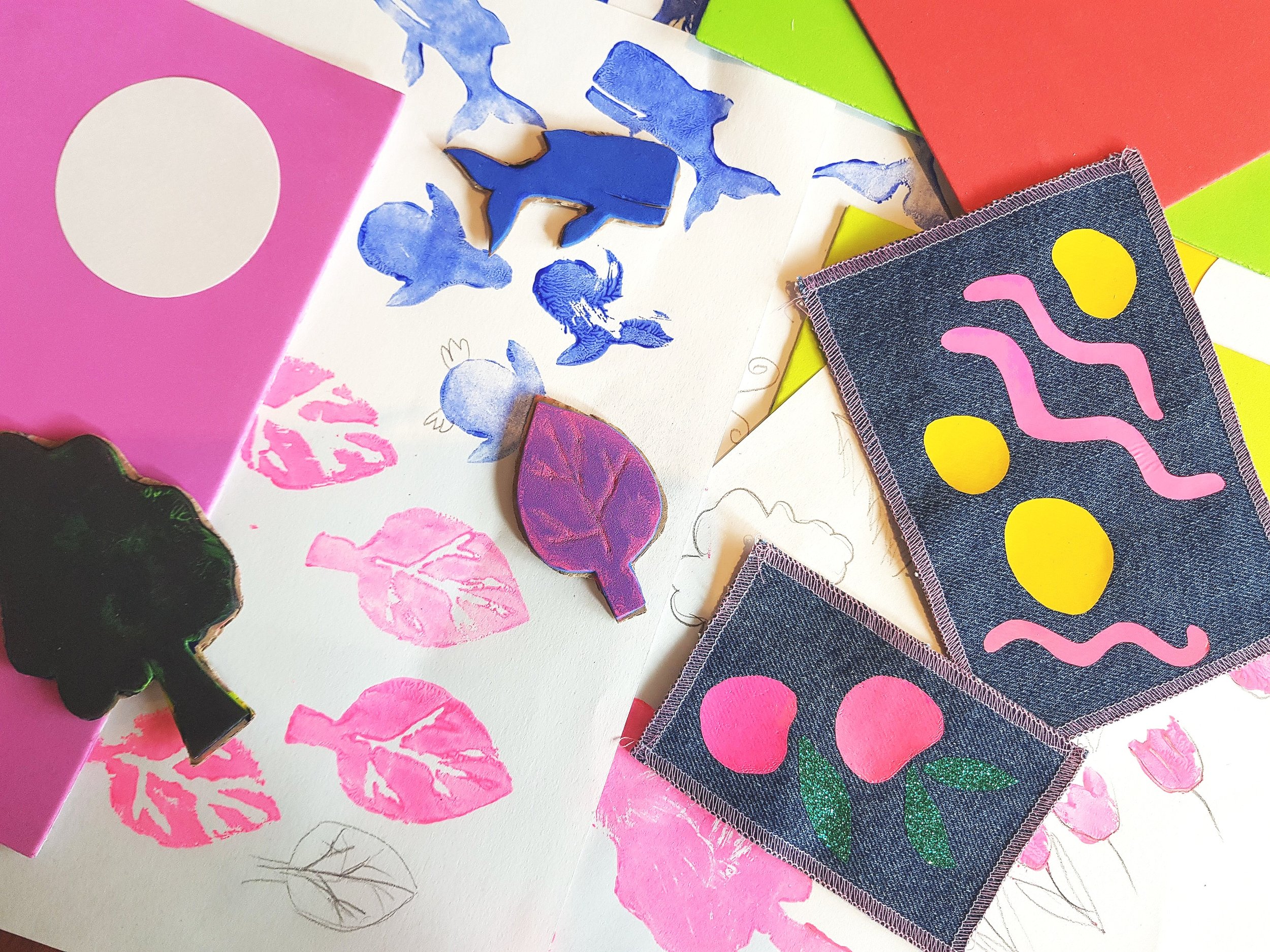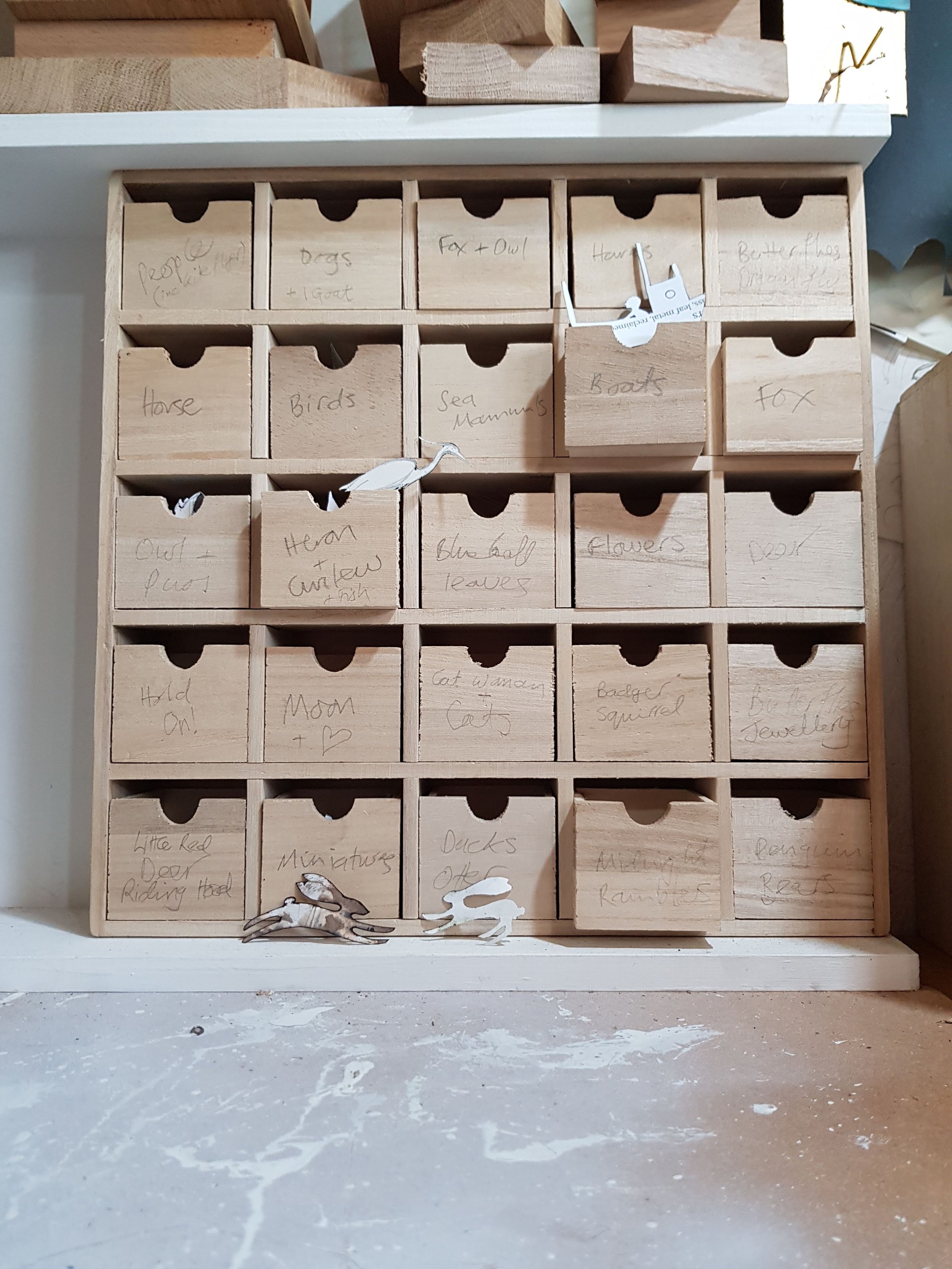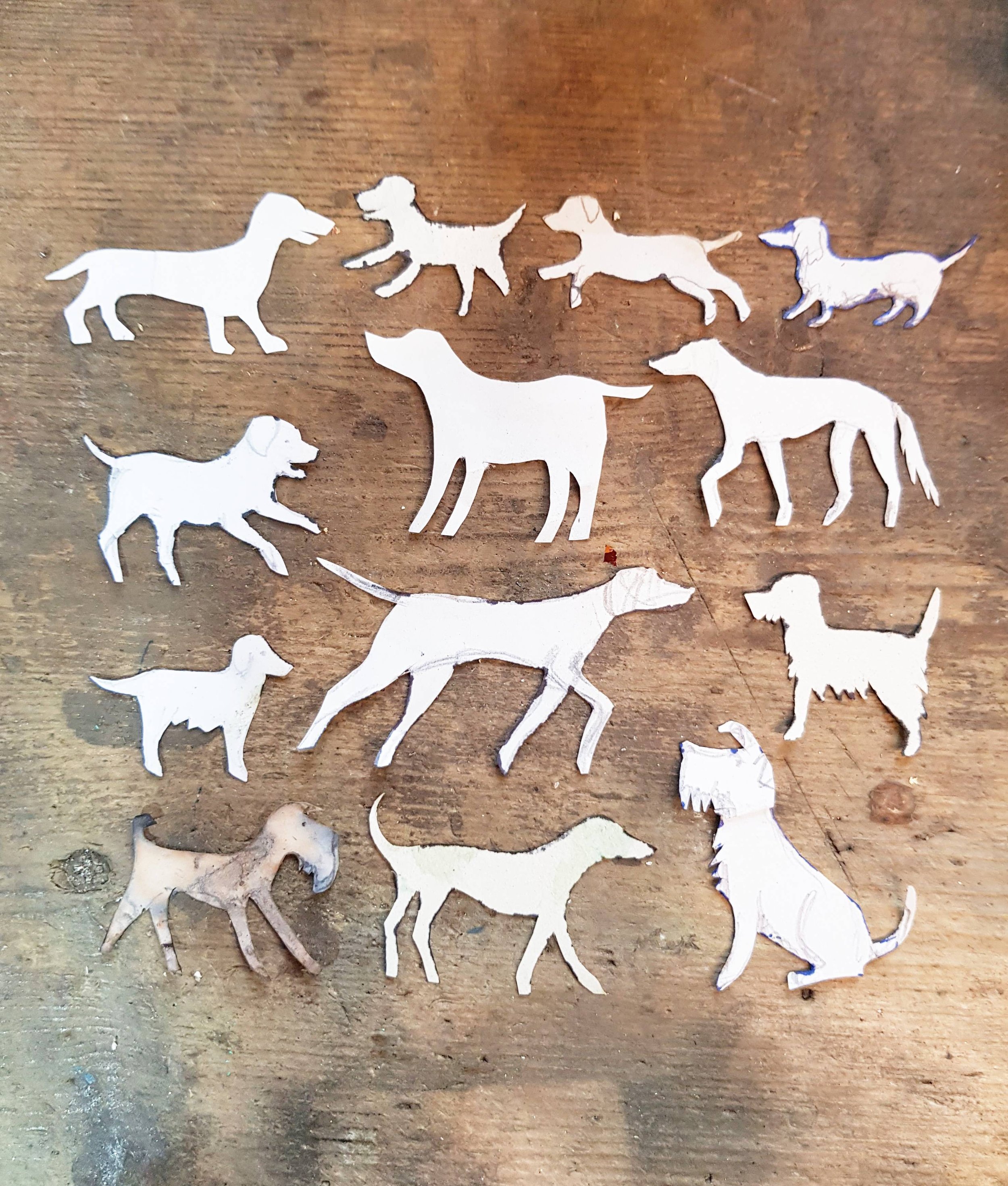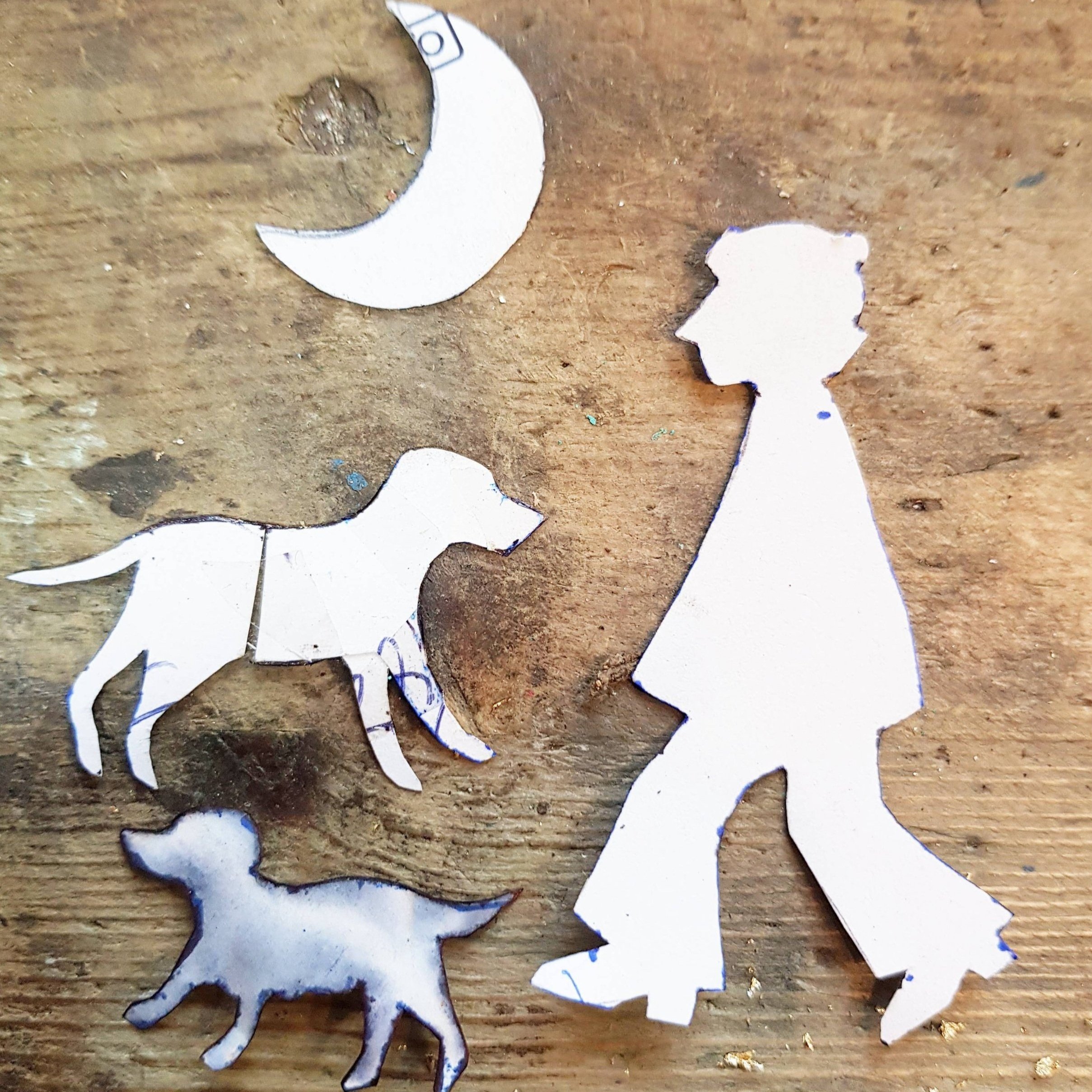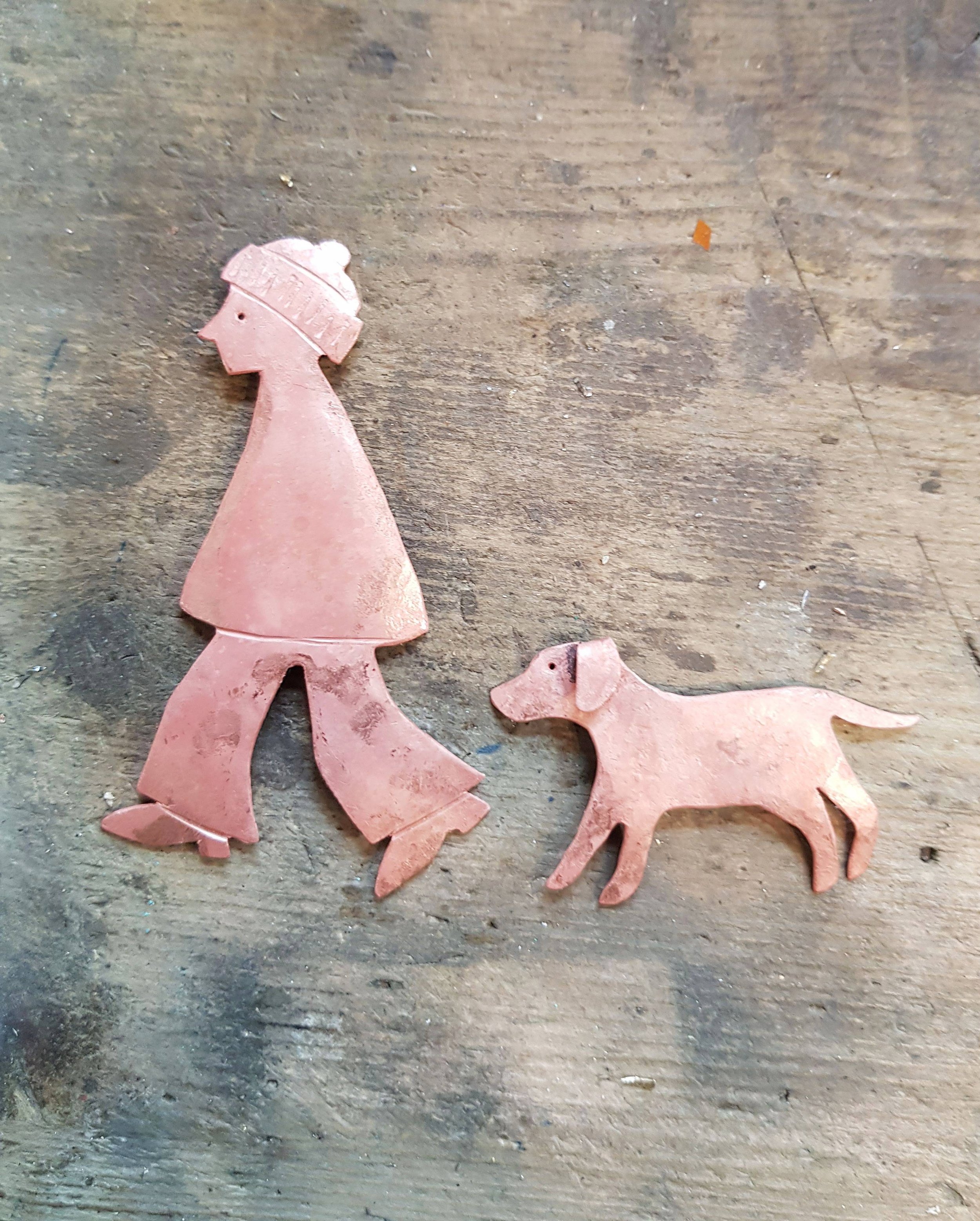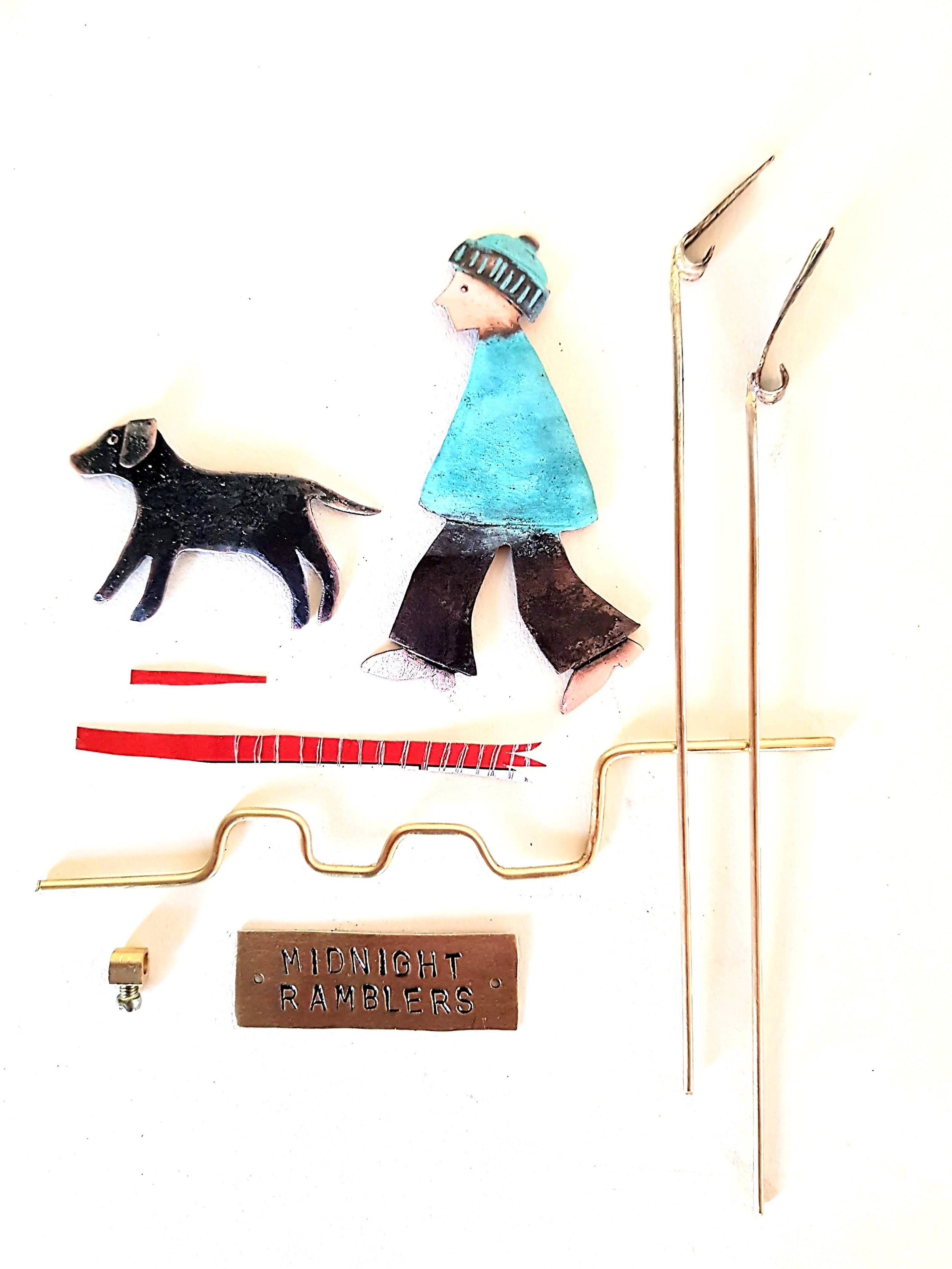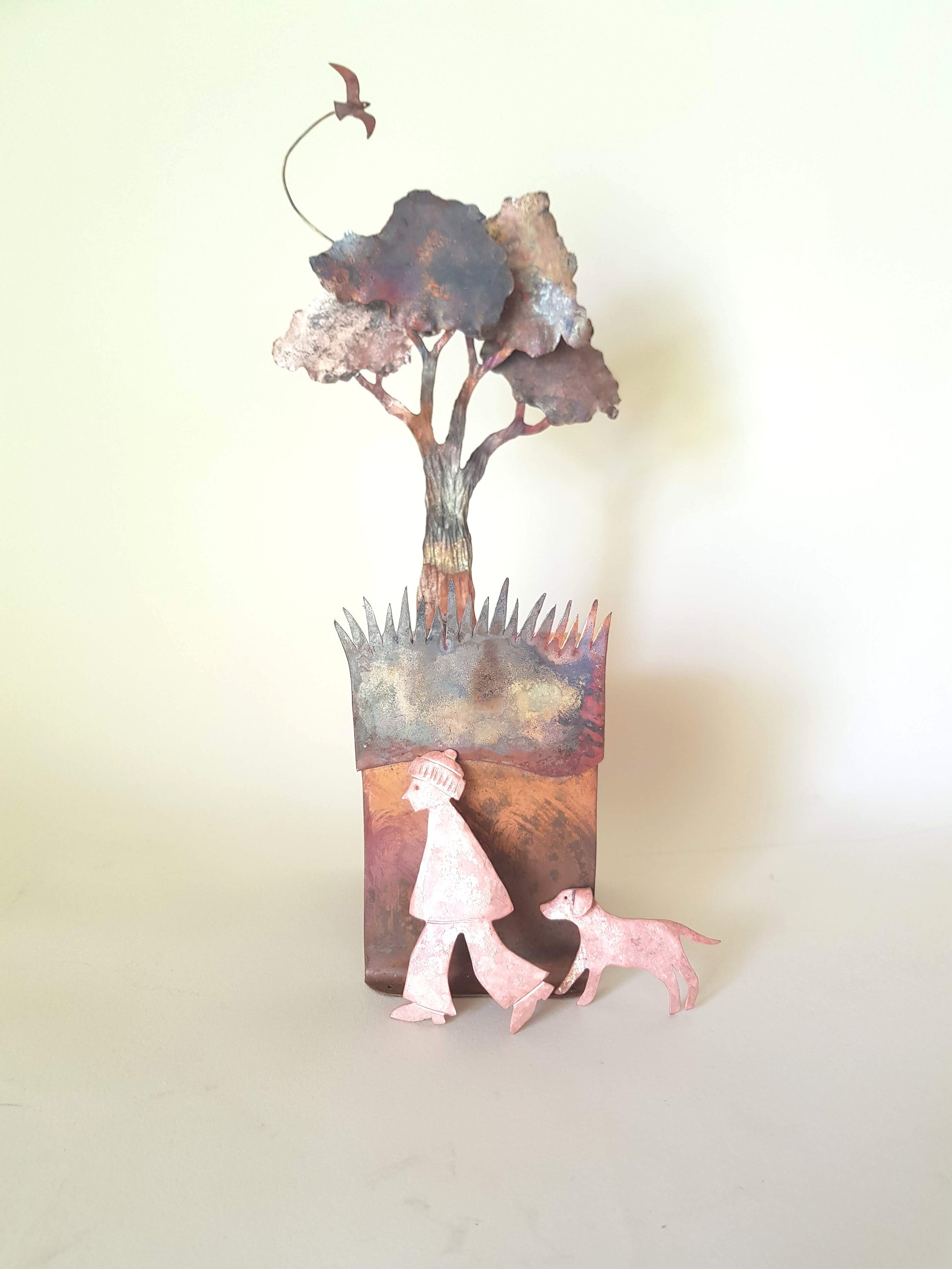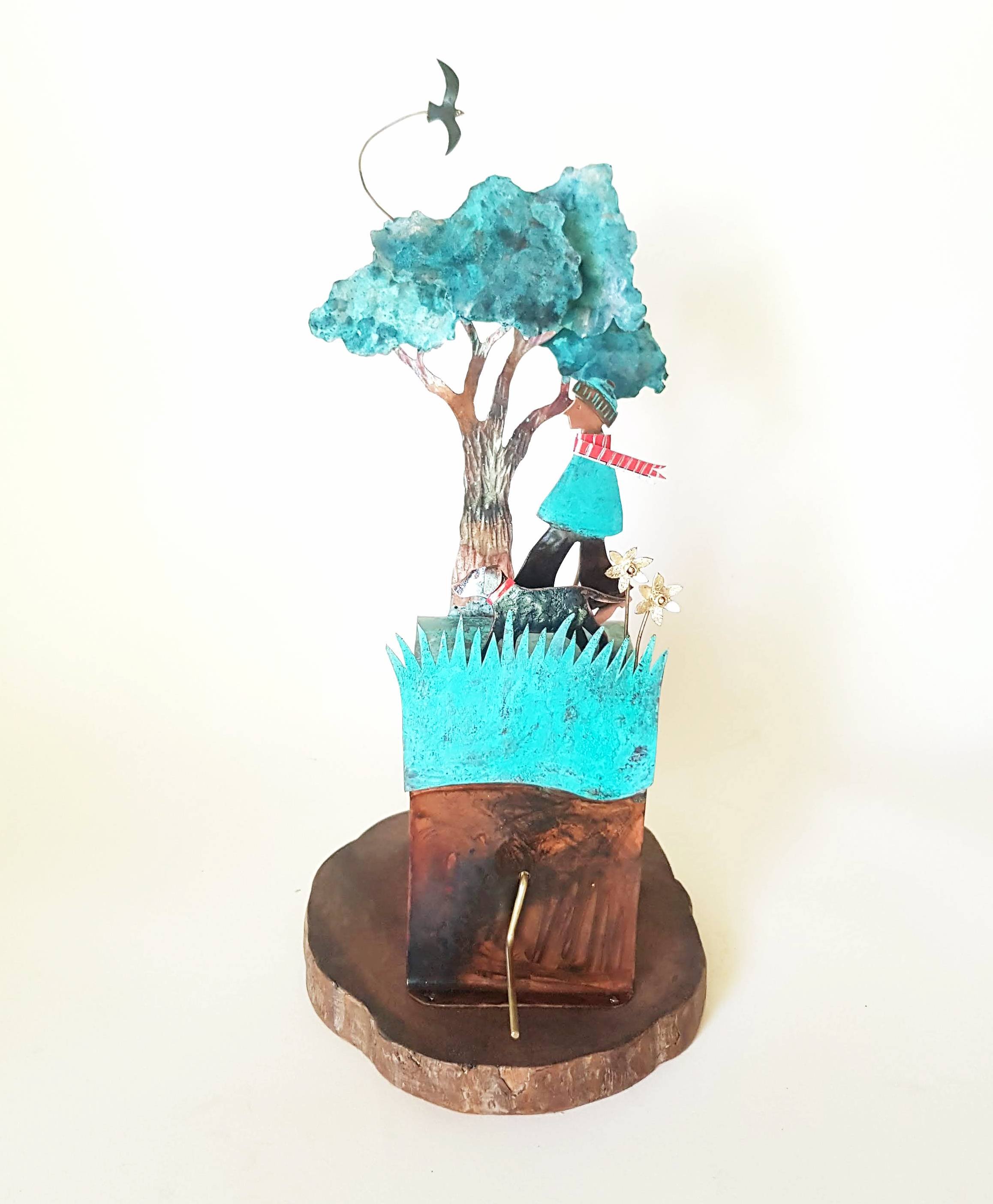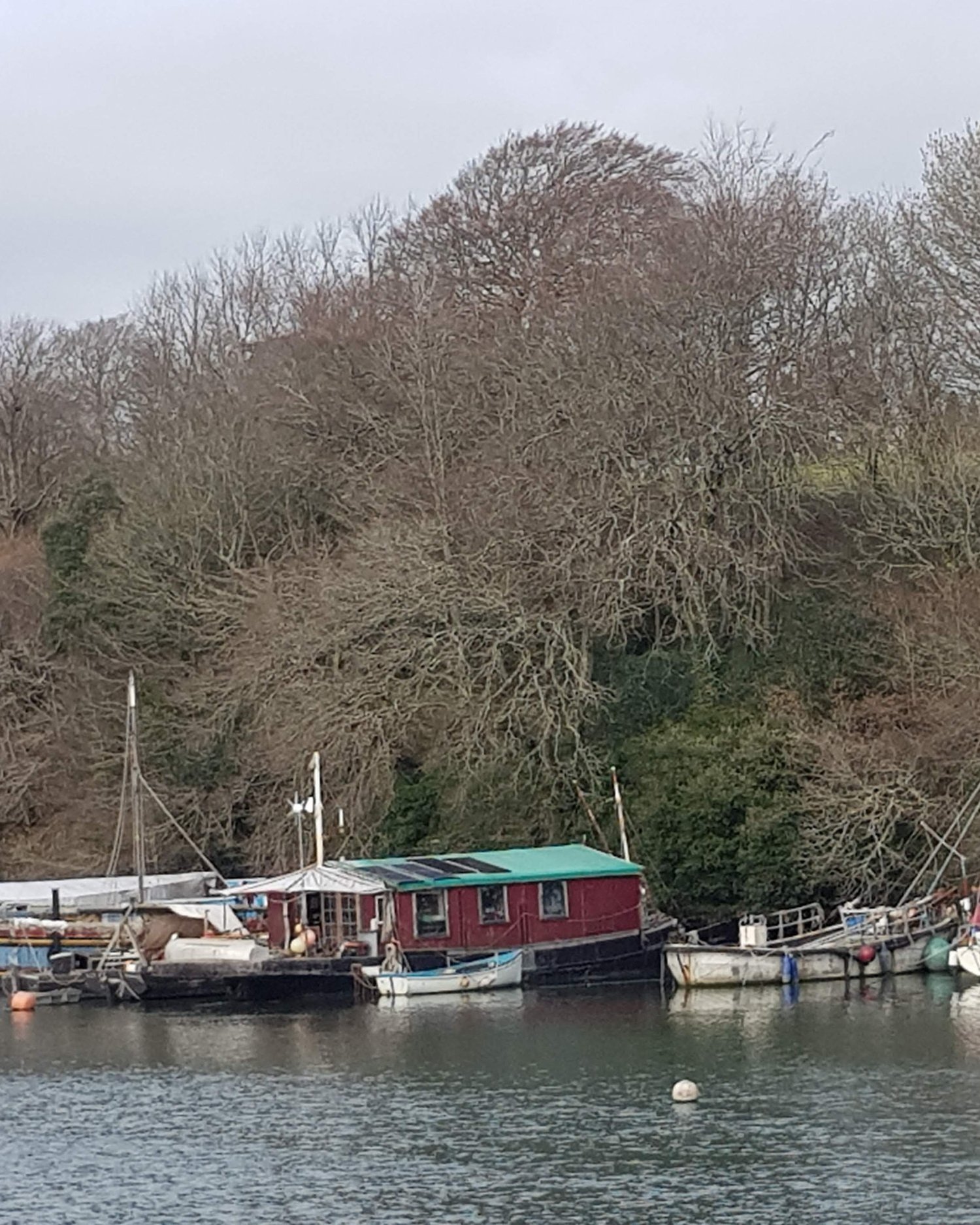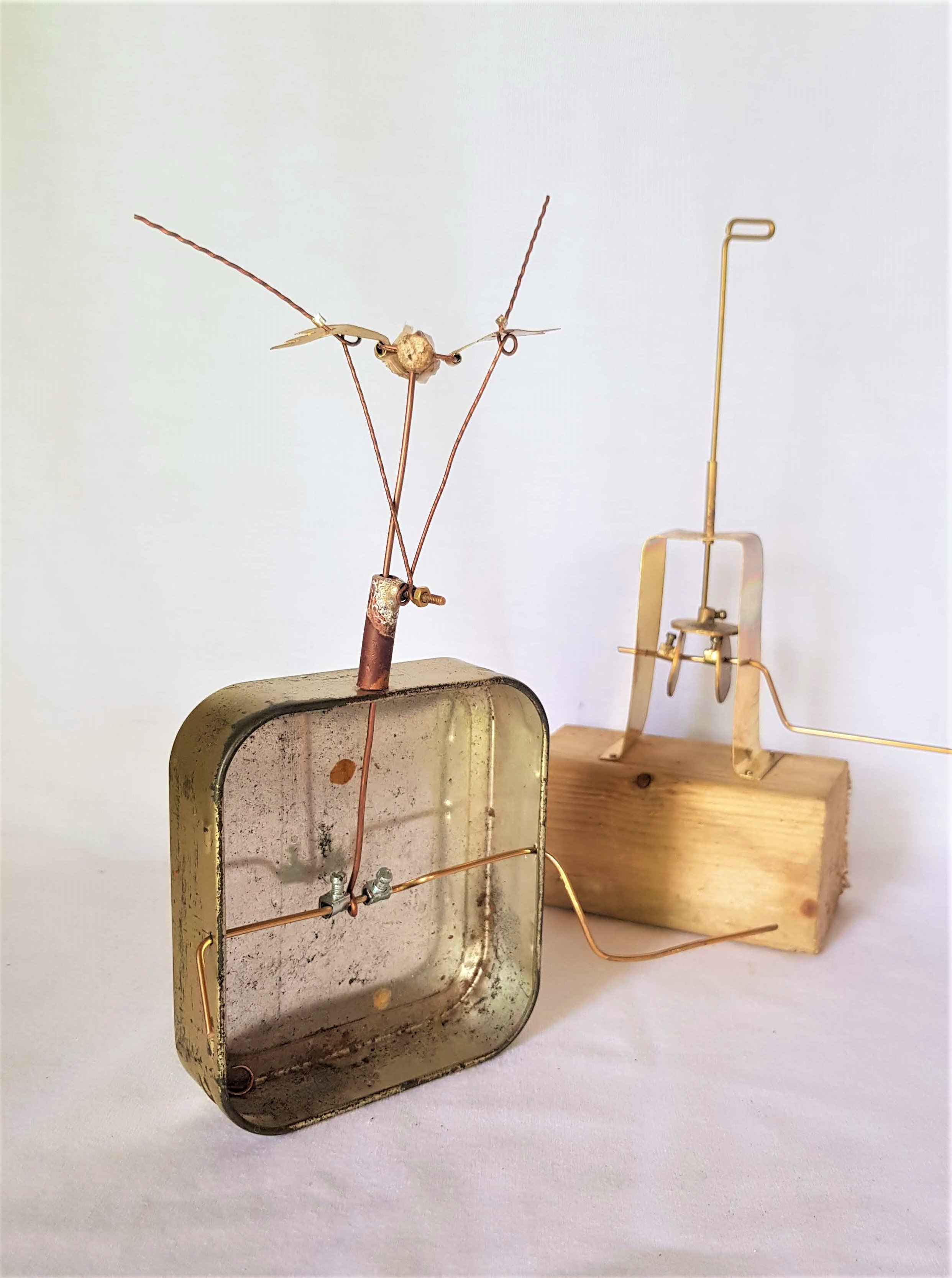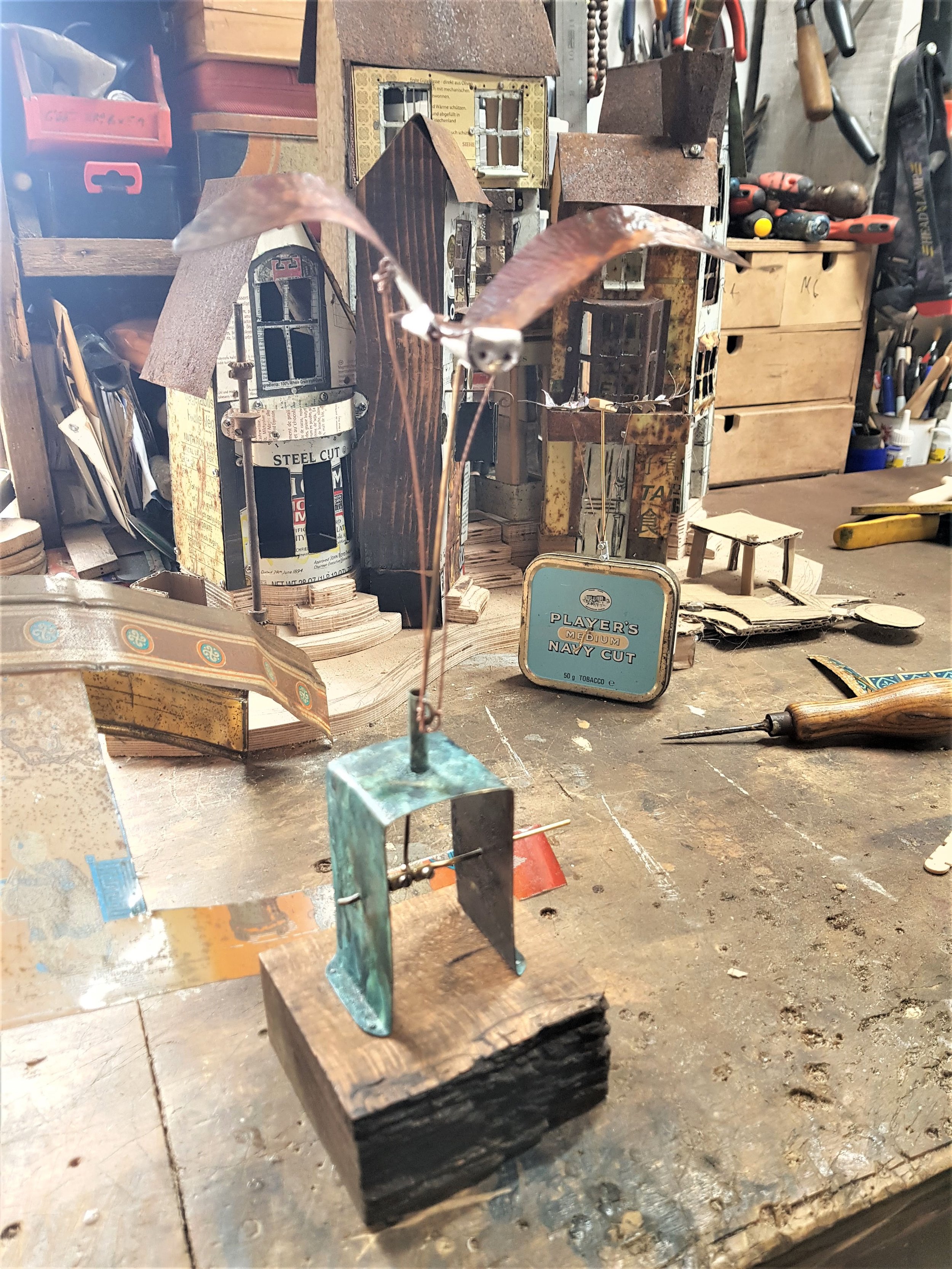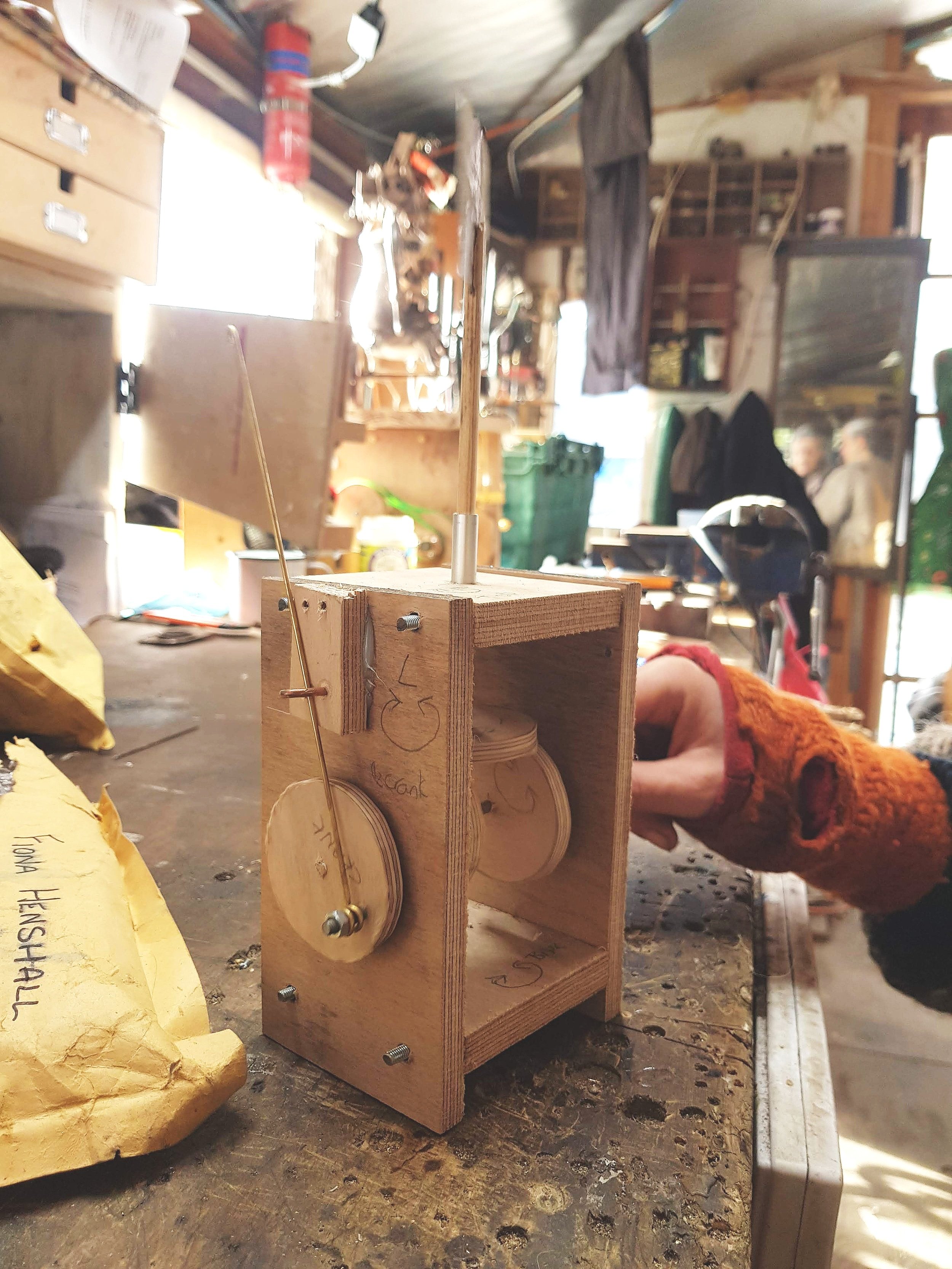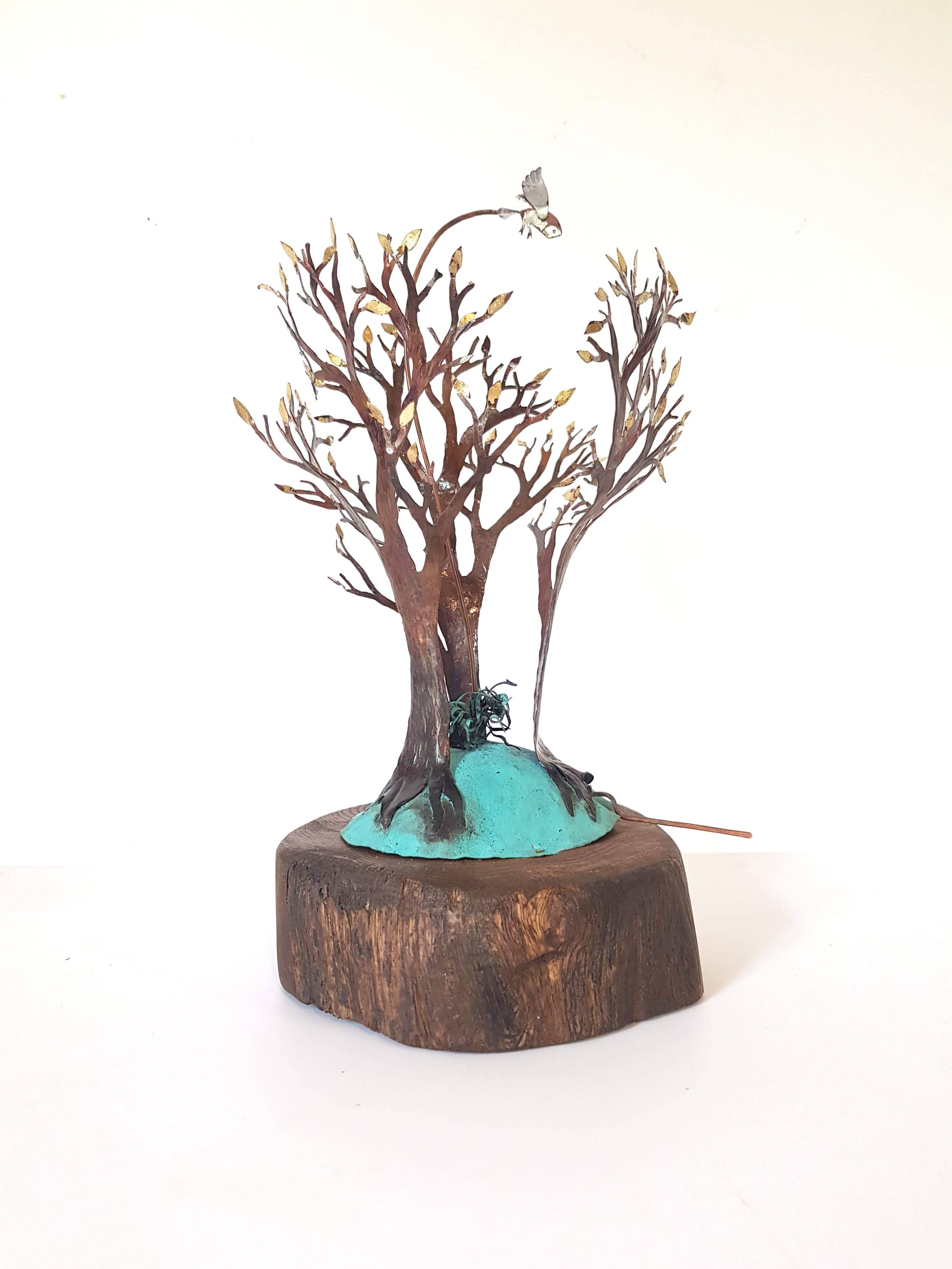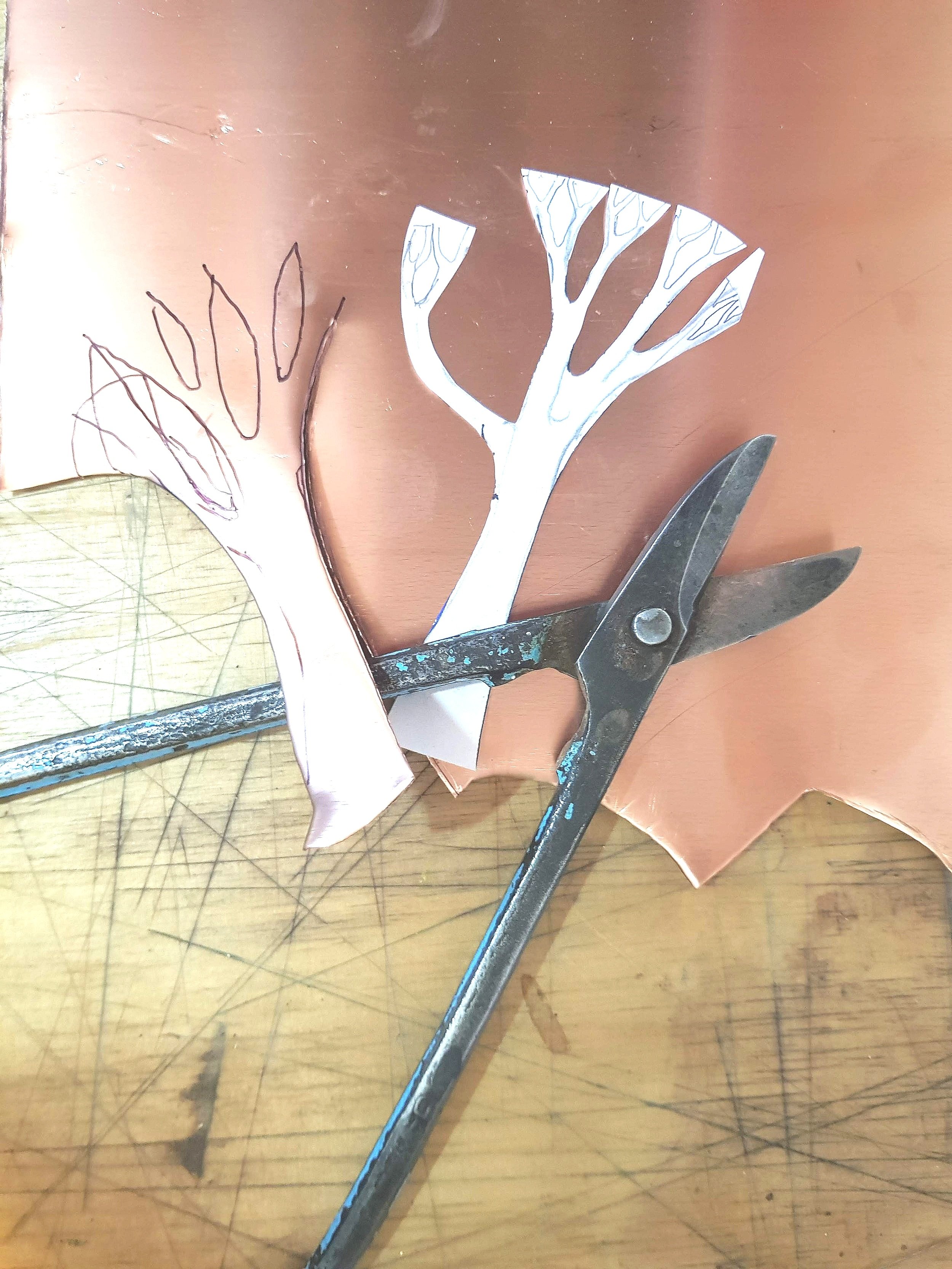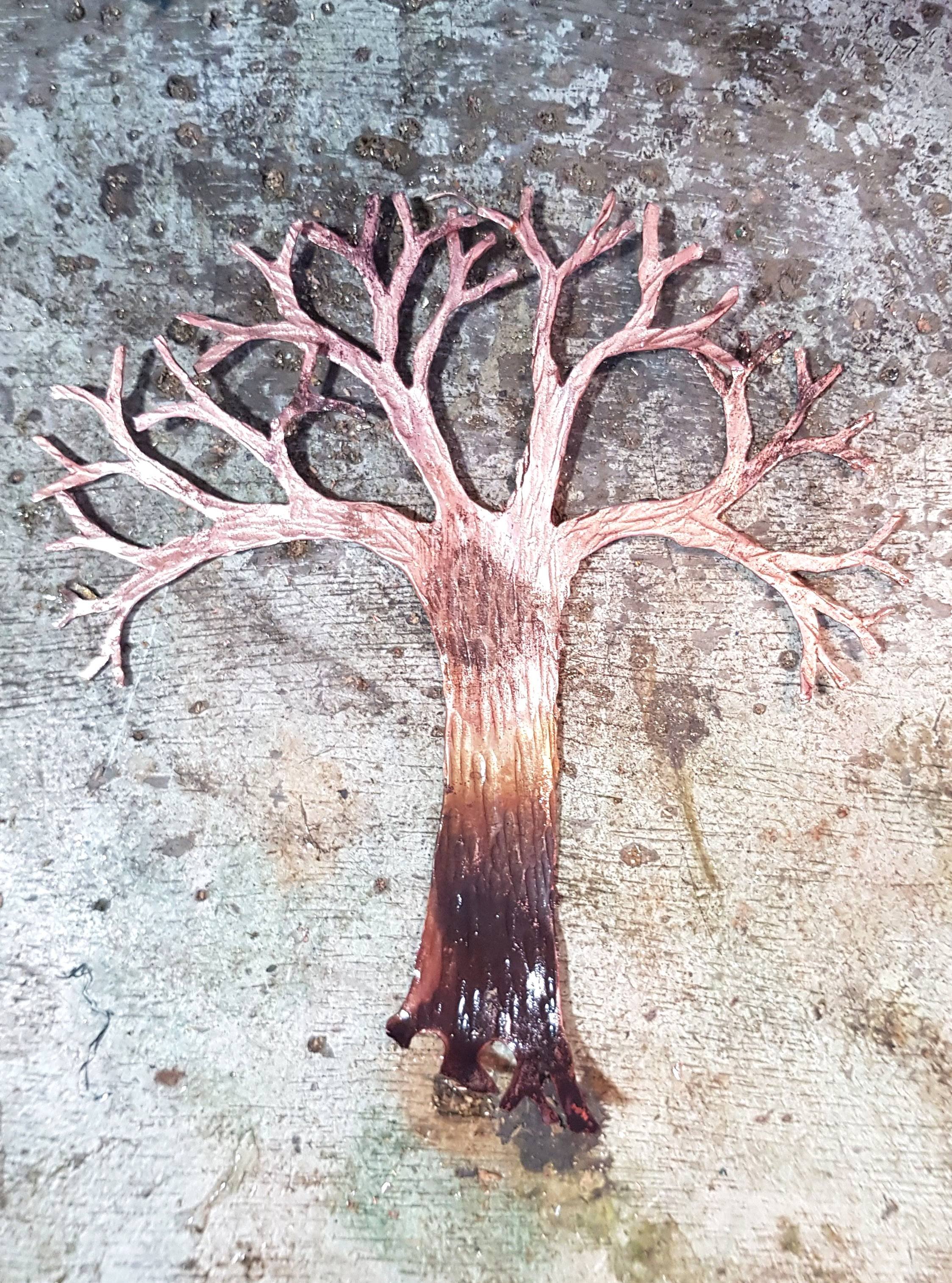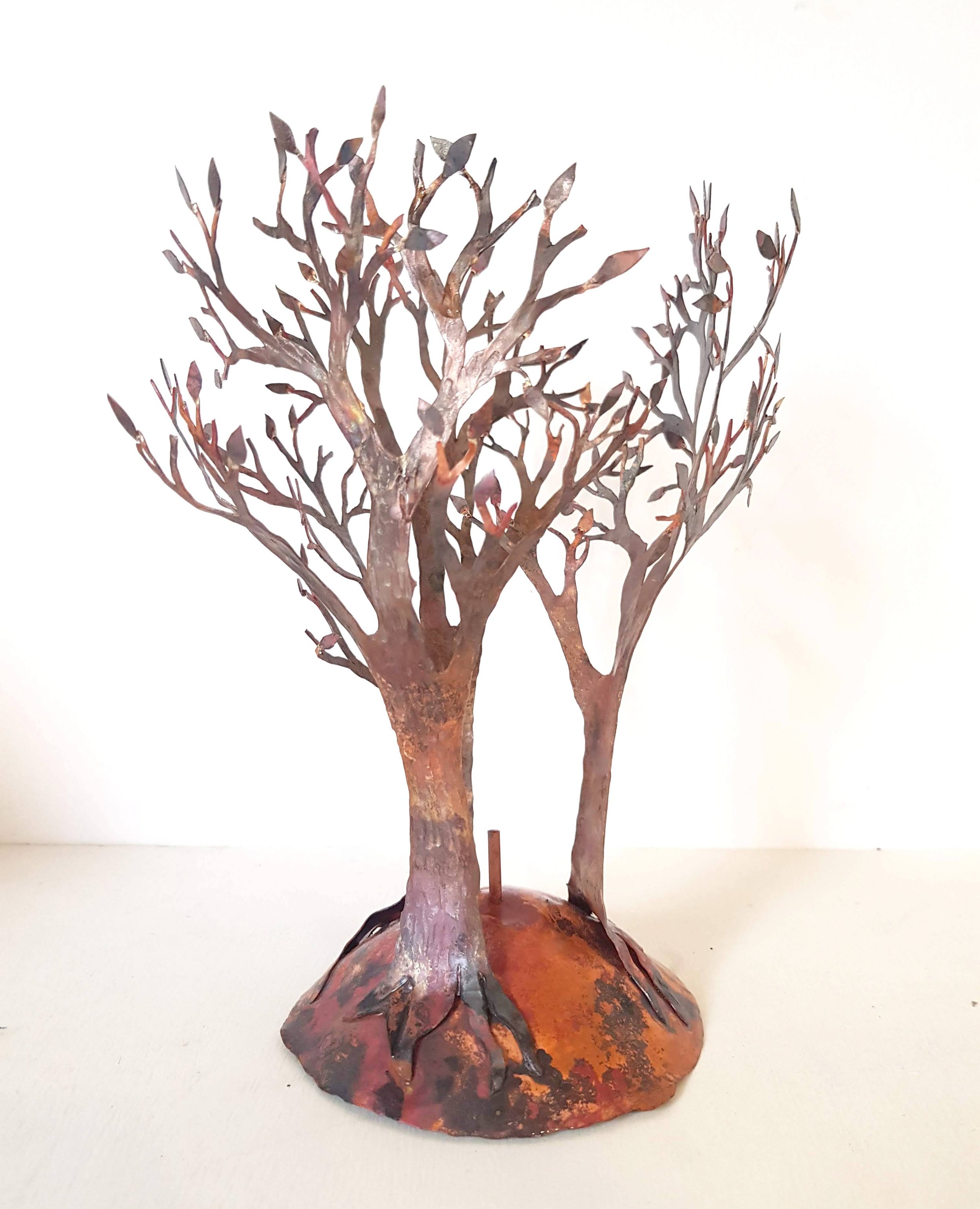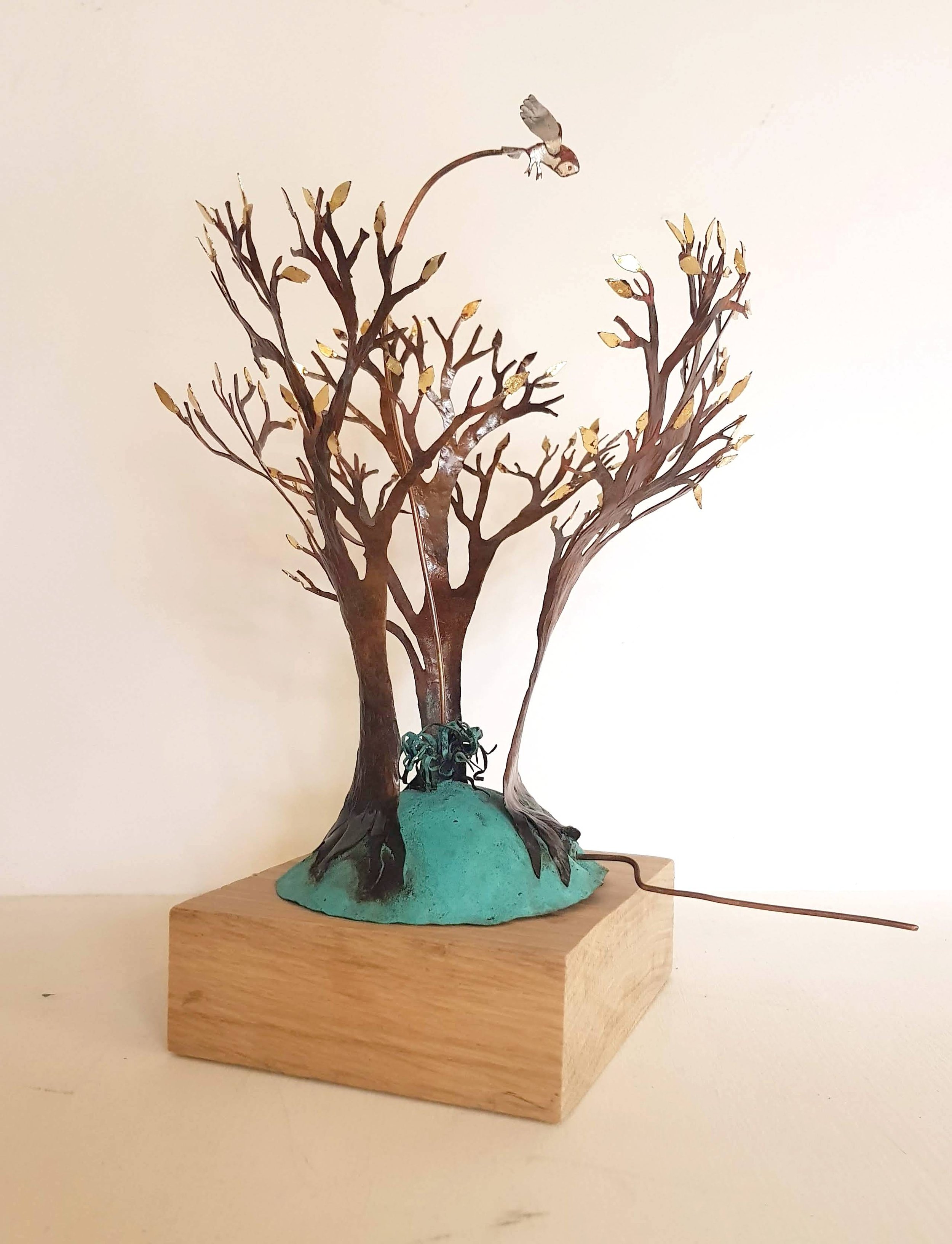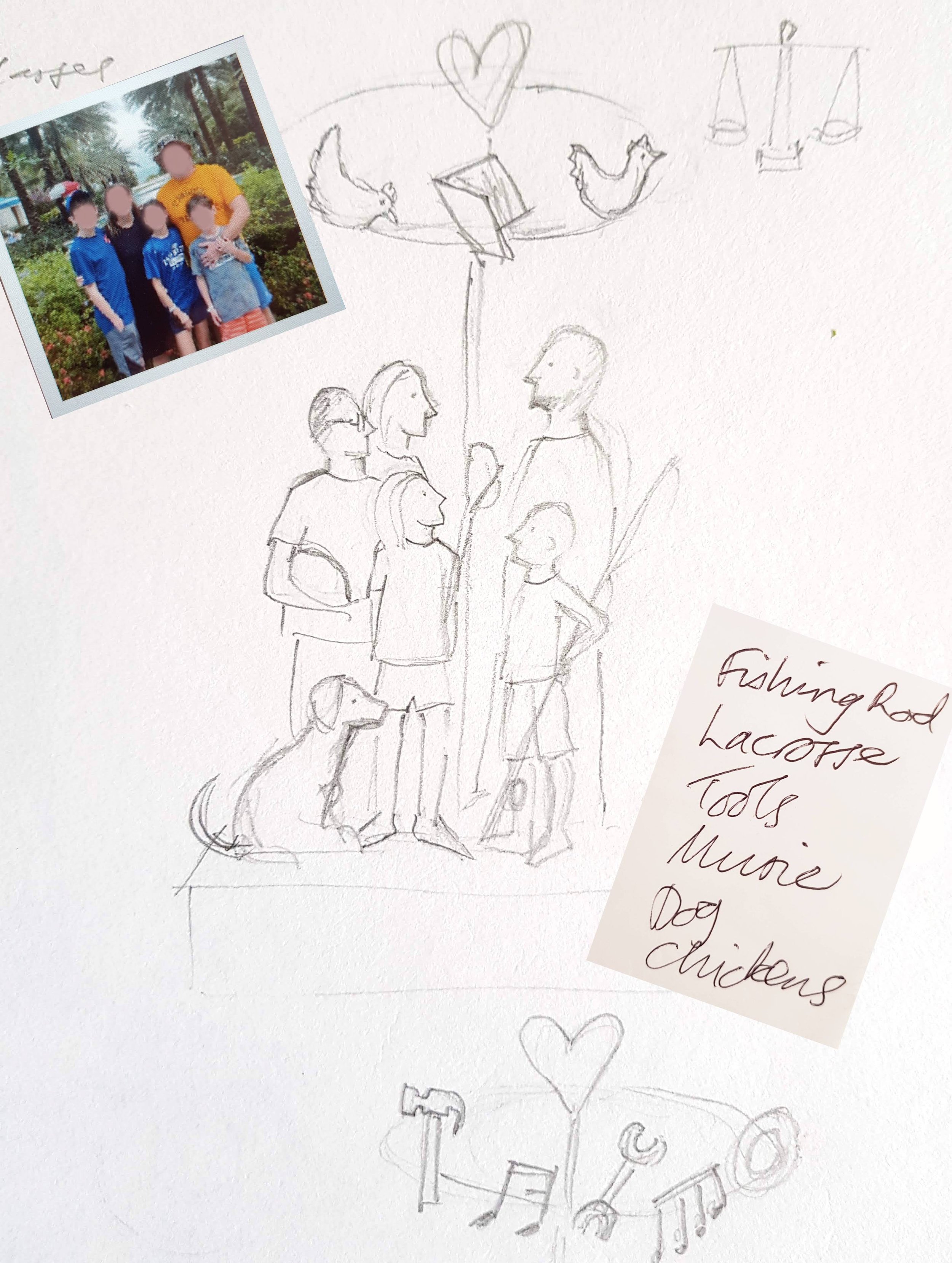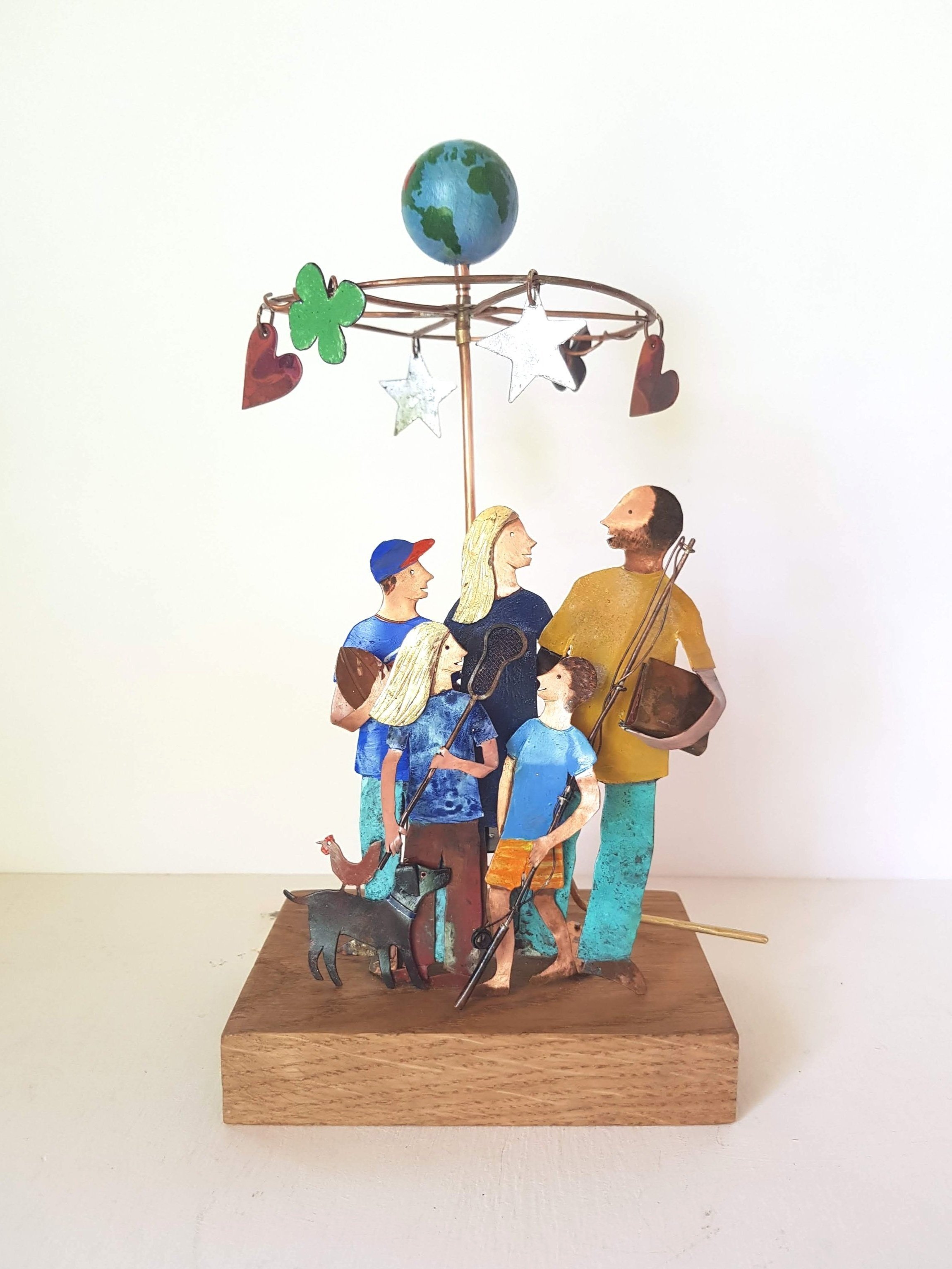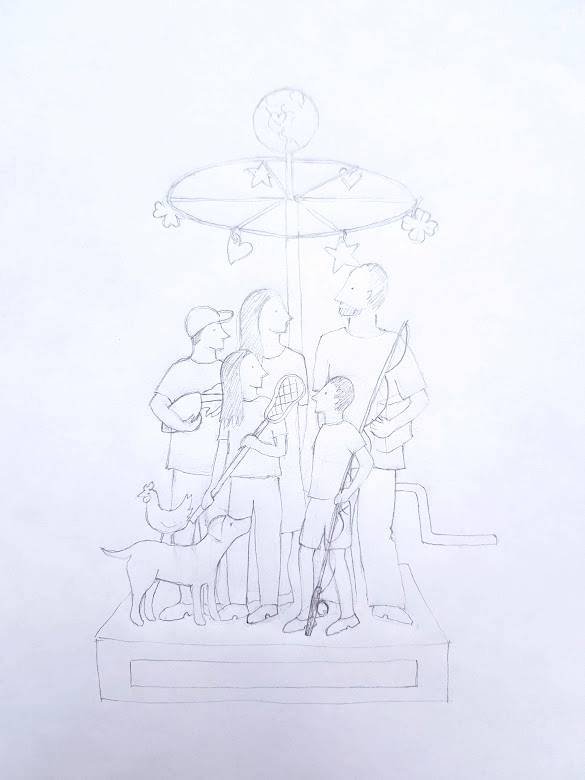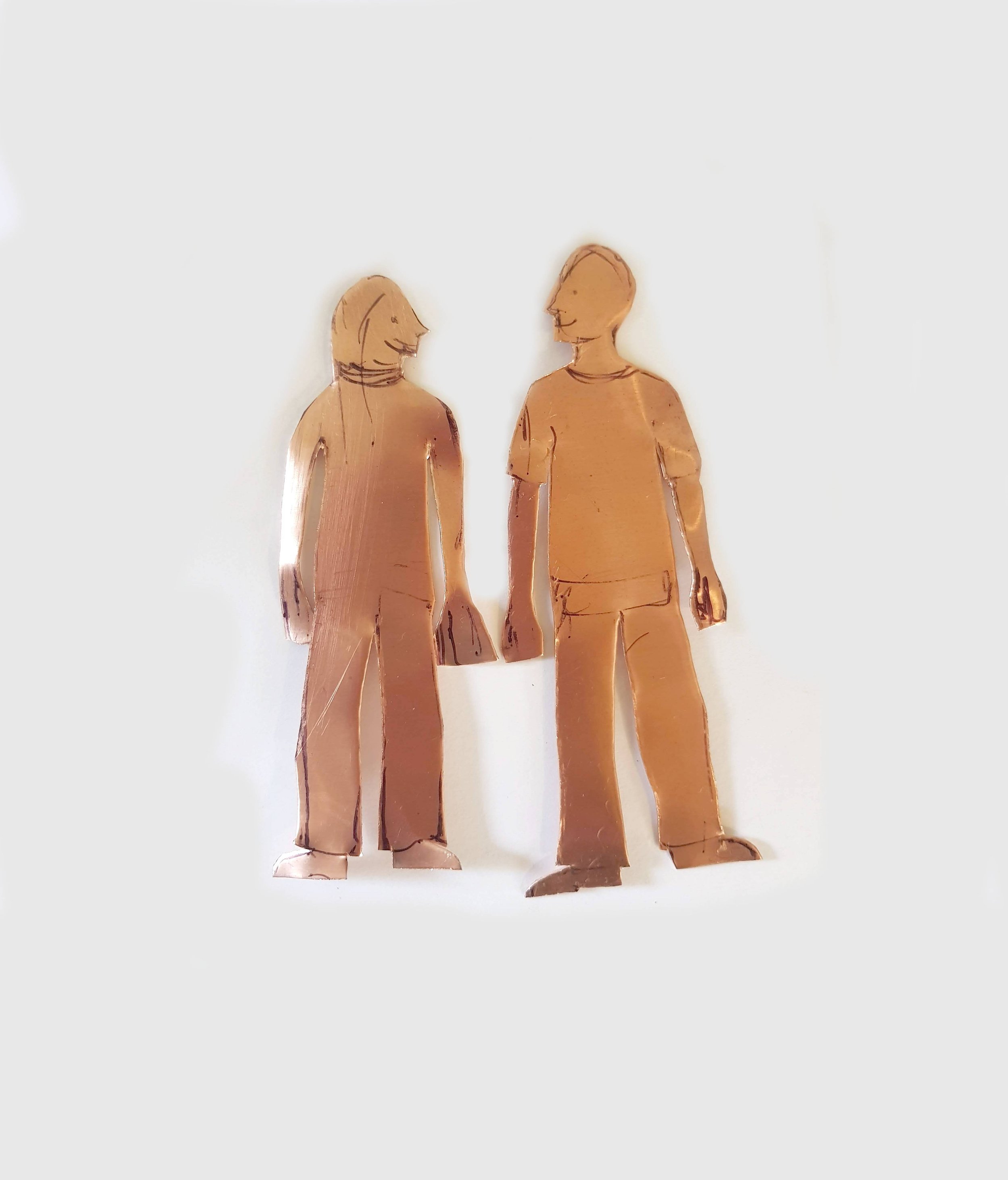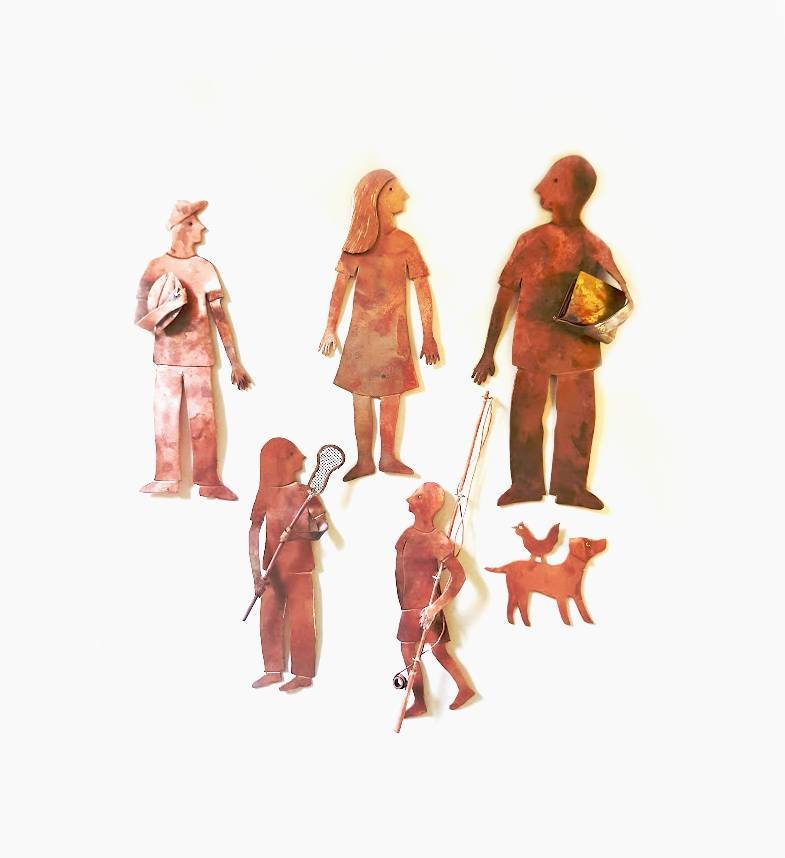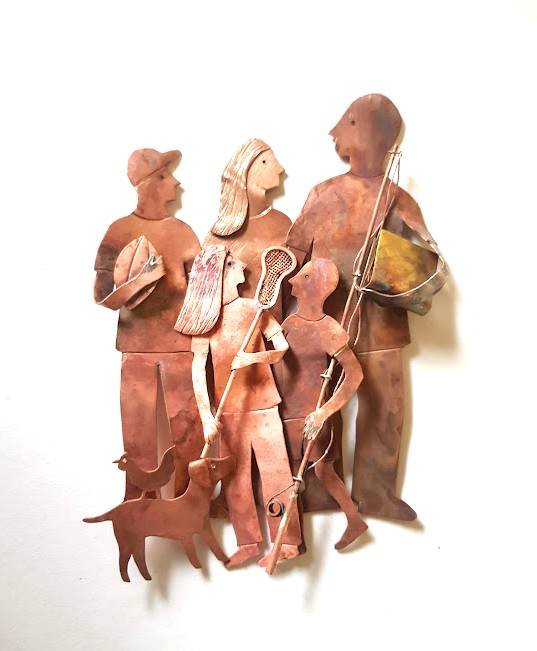Sanderlings - patinated and painted copper and brass on reclaimed section of whisky barrel stave
It seems like it’s been a long winter this year. I confess to being a big lover of winter with its cosy nights and stark landscapes that show off the bare bones of trees denuded of leaves. Winter brings a stillness that I crave by the end of the year. There can be too much of a good thing though and I’m now more than ready to see bright blue skies and springtime blossoms. The weekend just gone brought us exactly that. Crisp sunny mornings followed by long days that held the warmth of the sun. I took the chance to wander round our local creek in the hopes of spotting early spring blooms. I wasn’t disappointed.
Yellows, blues and greens were a welcome sight on my creekside walk.
On the previous day I popped down to the shoreline at high tide for a quick breath of sea air. I always go with my binoculars in my pocket - just in case. A tiny wren hopping around the rocks by the sea wall was the first bird to put in an appearance. I hadn’t expected to train my bino-sights on a garden bird but it was oblivious to my presence so I spent a happy moment watching it catching bugs in close up. So lovely to see all the tiny details of its plumage. As I carried on watching the little wren I heard the unmistakable flapping of swan’s wings. There followed the most breathtaking display of two swans circling the creek before regally swooping over and above the distant trees to who knows where. Finally, a group of sanderlings clung to the space just above the water as they flew en masse in a delightful flurry of chirrups, darts and dashes. A creekside murmuration.
To my credit I made no attempt to take photos of these charming birds. I’m no wildlife photographer, rather, I choose to relish the moment and simply look. I did take some photos of the creek on my walk which will give a sense of place at least…
Today is still clear but much colder than yesterday so it has been a joy to look through these photos and remember walking in the springtime sunshine!













































